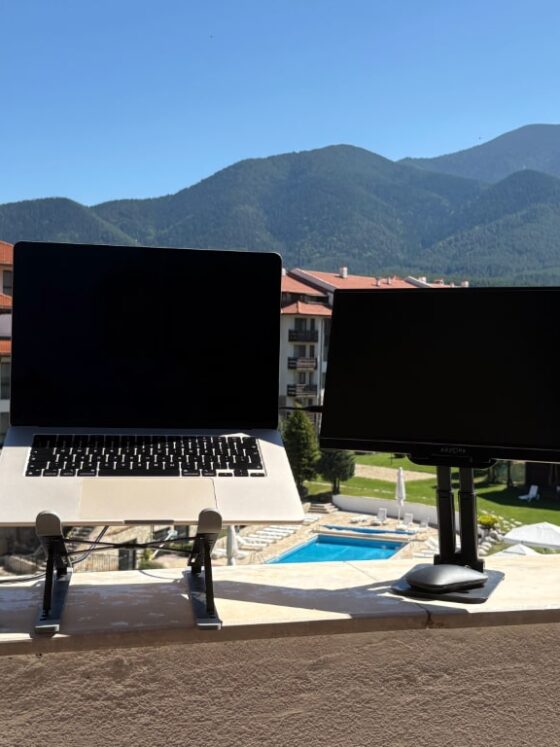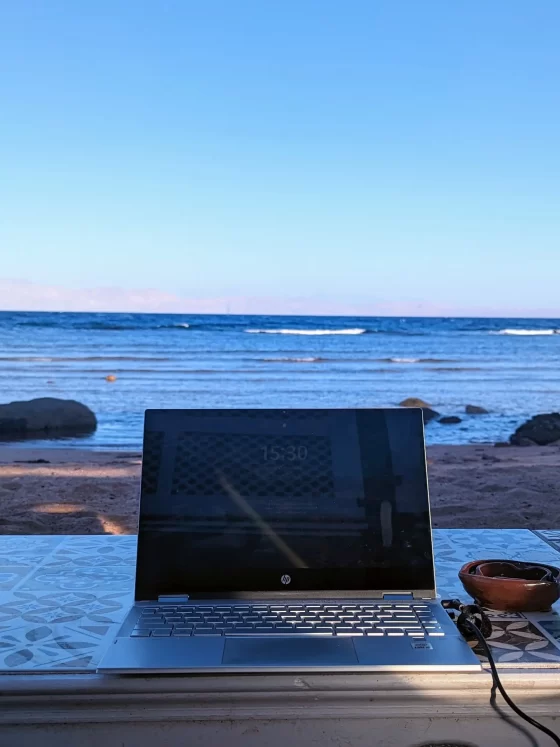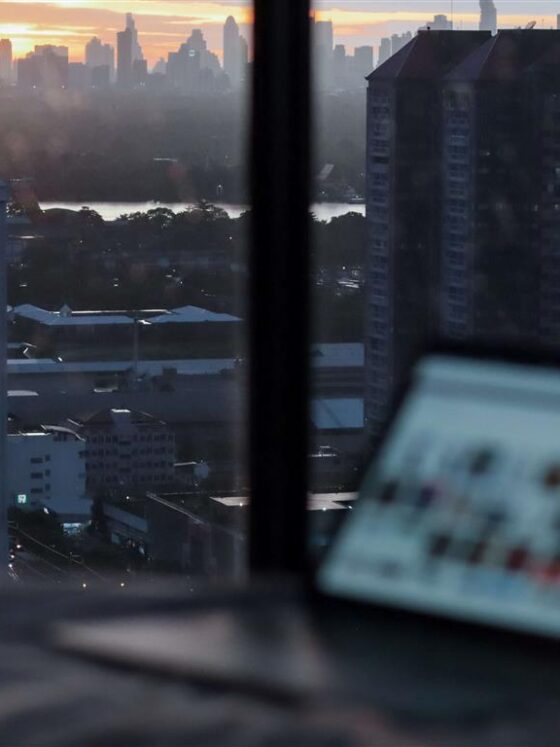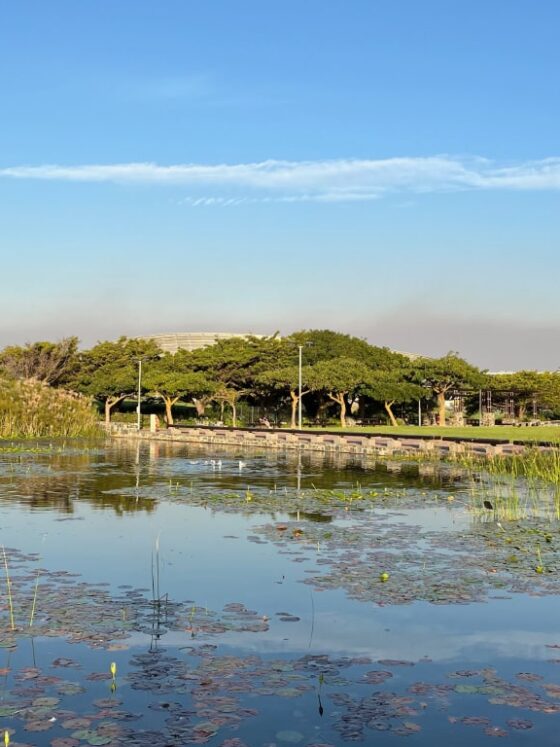Four years into my digital nomad journey and I still Google ‘best digital nomad locations’ to find my next destination. And it’s SO overwhelming.
There are endless “top 10” lists out there telling you to pack up your life and move to Chiang Mai or Costa Rica without ever having been there themselves. At least I am pretty sure they have never been – the stock images and the Top 100 title usually is a giveaway.
Here, I’m only talking about places I’ve actually lived and worked remotely from – the destinations where I set up my laptop, found my favourite coffee shop, made some friends, and built my little version of the digital nomad lifestyle.
So they might not be THE best digital nomad locations out of anywhere (there are plenty of places I am yet to go that I am sure are incredible for Digital Nomads) but if you’re after some tried and tested destinations, you’re in the right place.
Some of these places are already thriving digital nomad hotspots. Others are beautiful, affordable, hidden gems that are just starting to attract nomads and remote workers.
If you’re looking for realistic inspiration for your next move, so you hopefully aren’t caught somewhere with rubbish internet and absolutely 0 community, then keep reading.
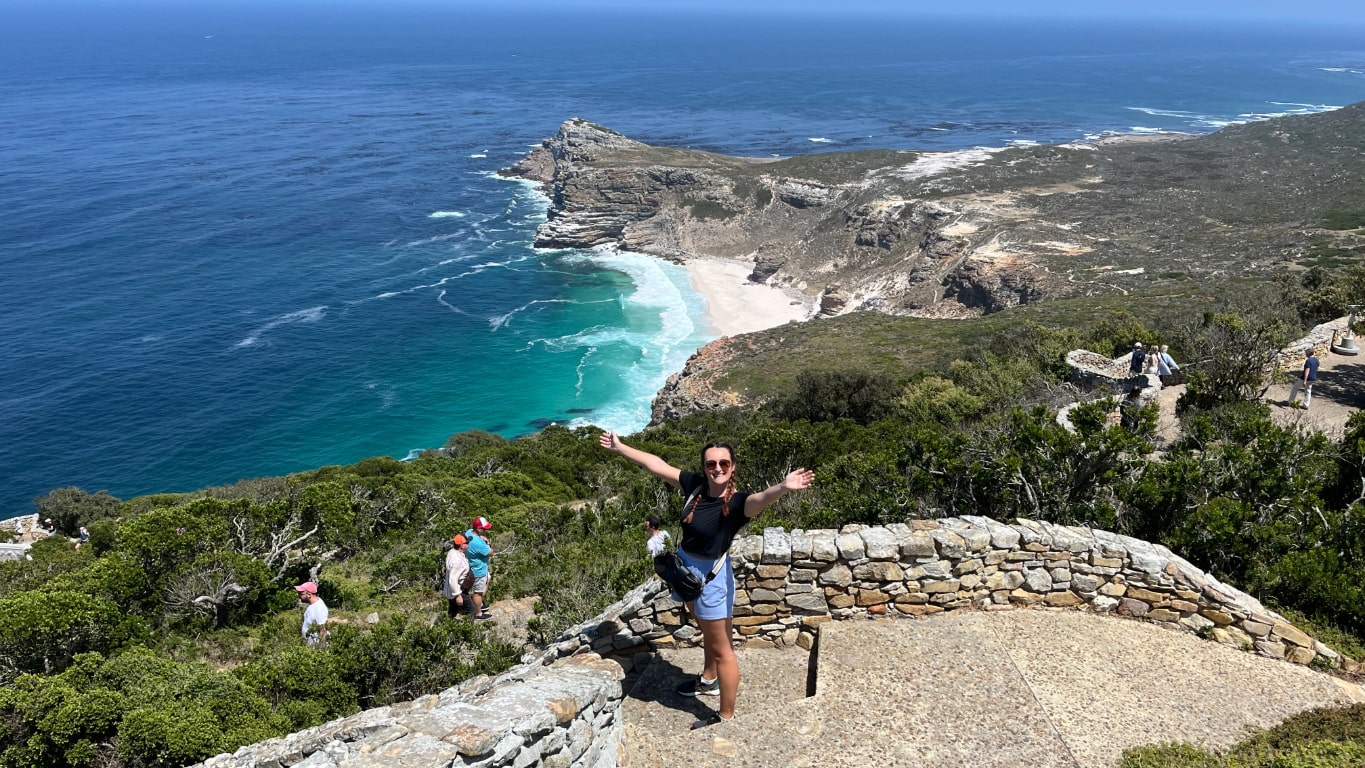
What Makes a Great Digital Nomad Destination?
When you’re picking your next digital nomad destination, these are the things I think matter most:
- Reliable Wi-Fi: Because nothing spikes the heart rate like a buffering Zoom call when you’re mid-presentation.
- Coworking spaces or work-friendly cafés: not just for decent chairs and strong coffee, community is everything when you’re living the nomad lifestyle.
- Affordable cost of living: so you can live well, not just survive.
- Safety: essential for peace of mind, especially when travelling solo or settling somewhere long-term.
- Lifestyle and things to do: because work-life balance matters. And, let’s be honest, why else are we doing this?
- Ease of living: visas, rentals, language, transport – the less stress, the better.
Truthfully, picking a new place is always a bit of a gamble. Sometimes you rock up and it’s even better than you imagined.
Other times…well, let’s just say I’ve shed a few tears over bad Wi-Fi and misleading Airbnb photos. And sometimes, it’s no one’s fault, it just doesn’t work!
Adaptability is basically the unofficial job description for nomads. But when you’re juggling client calls and deadlines, a few basics really are non-negotiable.
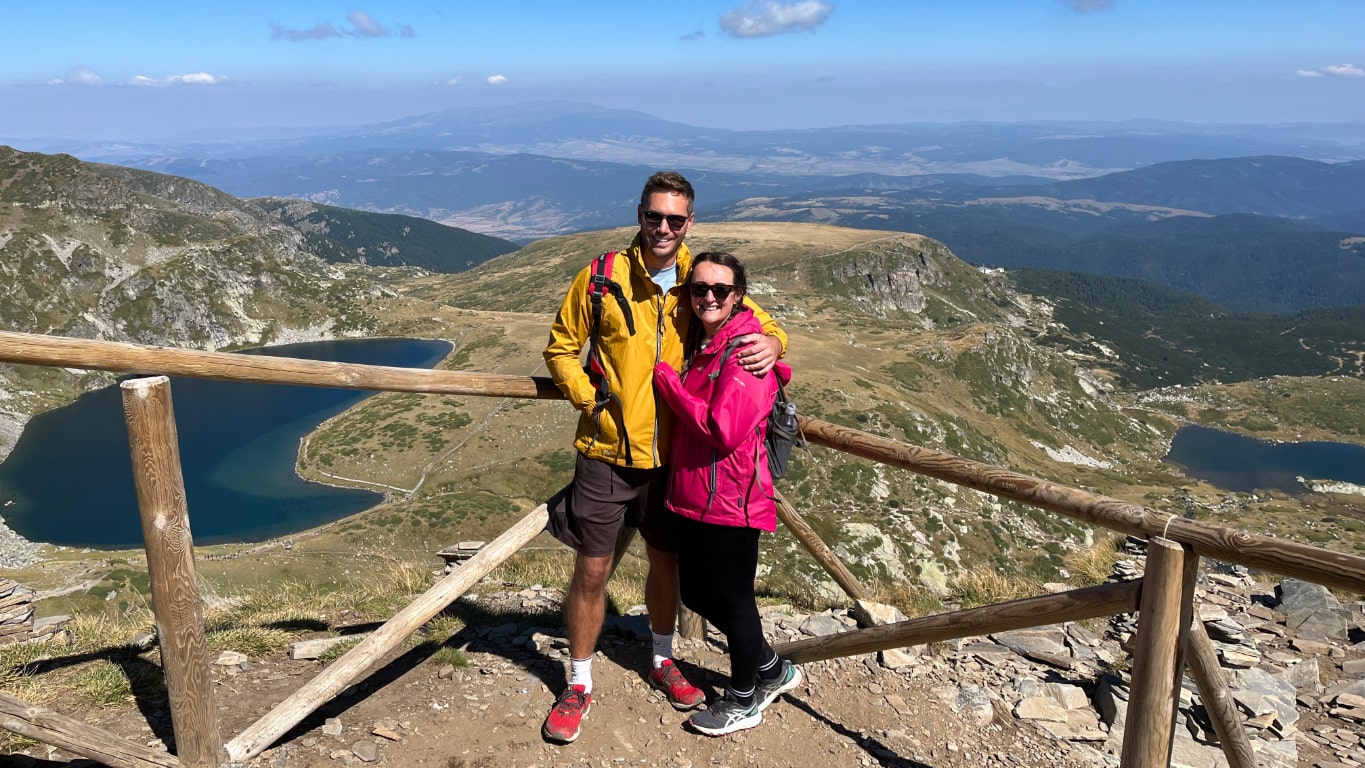
Best Digital Nomad Locations (as I see it!)
Here are the best digital nomad locations that have personally worked for me. A mix of mountain towns, beachside villages, and lively cities across Europe, South America, and Africa.
I’ve travelled through a lot of places over the past few years, and honestly, I’ve loved so many of them. But these are the standouts. The places that genuinely ticked all the boxes for living, working remotely, and (equally important) having a life outside of work.
Some of these are already pretty popular with nomads. Others are a little more under the radar. Either way, they’re all places I’d happily go back to.
First up is one of my all-time favourites.
Bansko, Bulgaria
Bansko is one of those places I never planned to love as much as I do. I went on a whim in December 2021 because a friend casually mentioned it was good for skiing and remote work.
I’d never skied before, but Aaron (my boyfriend) loves it, so we booked the flight and we were on our way to Bulgaria for the first time.
It was only my second digital nomad destination ever, and it has ended up being one of the best digital nomad locations I’ve lived in so far.
Nestled in the Pirin mountains, Bansko is a tiny ski town with a surprisingly strong and welcoming nomad community. In winter, it’s all snow-covered chalets, chair lifts, and après-ski. In summer, it transforms into a peaceful mountain escape with hiking trails, hot springs, and long sunny days.
You can work in the morning, ski in the afternoon, and end the day drinking a Kamenitza (the local beer!) with new friends. It’s laid-back, affordable, and easy. Basically, everything I want in a remote work base.
Whether you’re chasing adventure or looking for somewhere chilled with a real sense of community, Bansko is the kind of place that makes remote work feel a little bit magical.
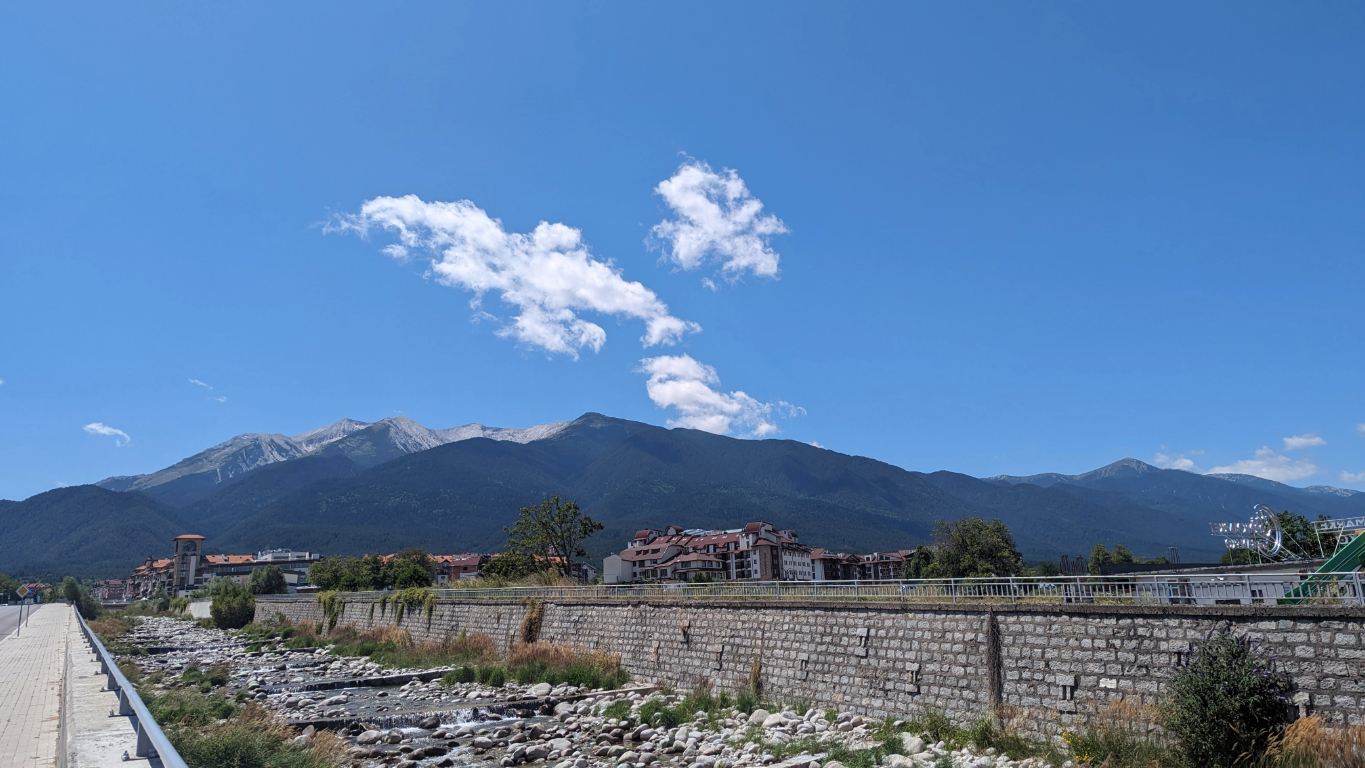
Coworking & Wi-Fi
Bansko has become a well-known nomad hub over the last few years, even hosting a Nomad Festival in June every year.
Despite being located in the Pirin mountains, around 2.5 hours from Sofia, the wifi and data connection are fantastic. You’ll even get 5G at the top of the mountain, which still blows my mind.
While the wifi is good enough to work from home, what makes Bansko stand out as one of the best digital nomad locations is its coworking community. And let’s be honest, working from the kitchen table has its downsides (queue broken neck).
Bansko has two main coworkings in town, AltSpace and Nestwork, and both are fairly different vibes, but in a good way.
Altspace Coworking
AltSpace is all about community. Think business mastermind sessions, side hustle days, art nights, board games, Friday BYO drinks (with free beers for members), weekend ski trips… honestly, they have something going on almost every day. It’s hands down the best coworking space I’ve been to – great Wi-Fi, comfy workspaces, private meeting rooms (included in your membership!). The owners, Becky and Mark, have become our good friends and have somehow cracked the code on making coworking feel like a real social hub.
You can do a free trial day at Altspace, which I’d highly recommend, especially since they’ve now got three locations, each with a different vibe. It’s a great way to test the waters.
You can read more about the awesome AltSpace community here.
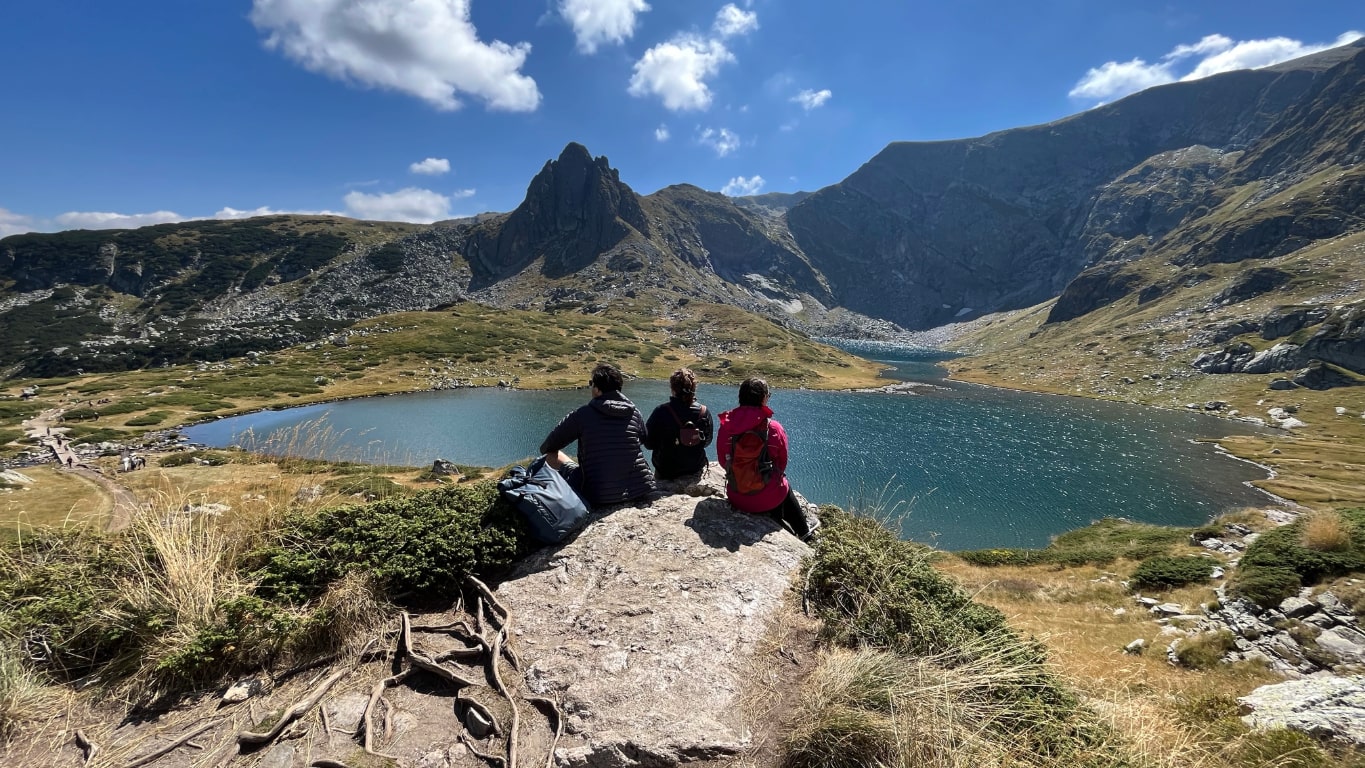
Nestwork
Nestwork, on the other hand, is a bit more “head down, get stuff done”. It’s quieter, more professional, and has a slightly more polished office feel. I know plenty of nomads who work from Nestwork during the day and then buy a social pass for Altspace so they can still go to the events and hangouts. Best of both worlds.
Read more about Nestwork here.
Cost of Living
One of the reasons Bansko keeps pulling me back is that it’s so affordable. I can live well, eat out, go skiing, and still save money without having to mentally calculate every single purchase like I do in most of Western Europe. It’s easy to live within my means here.
Here is a rough idea of what things cost:
- Apartments: €200–€700 per month. Depending on whether you’re opting for a studio or one-bedroom, the location (Gondola tends to be more expensive), and the finish (if you’re happy with an older style, then you can get something really cheap here). We have just rented a lovely one-bedroom apartment up near the Gondola area and it is €600 per month (not including water or electricity).
- Bills: Electricity is pretty cheap, and in the winter, most apartments are pretty well insulated, so it’s not too bad. In the latest winter season, our electricity cost around €100 per month. In the summer, it’s around €40. Water is around €30 per month. So you can live here for far less than in most other EU countries.
- Meals out: Again, super affordable, and there is a wide variety of places to eat in Bansko to suit your budget. But you can get a very tasty meal and a drink for around €10-15. A beer costs around €3 – my preferred cost of living metric.
You can live comfortably and still save money, one of the main reasons it rates as one of the best digital nomad locations.
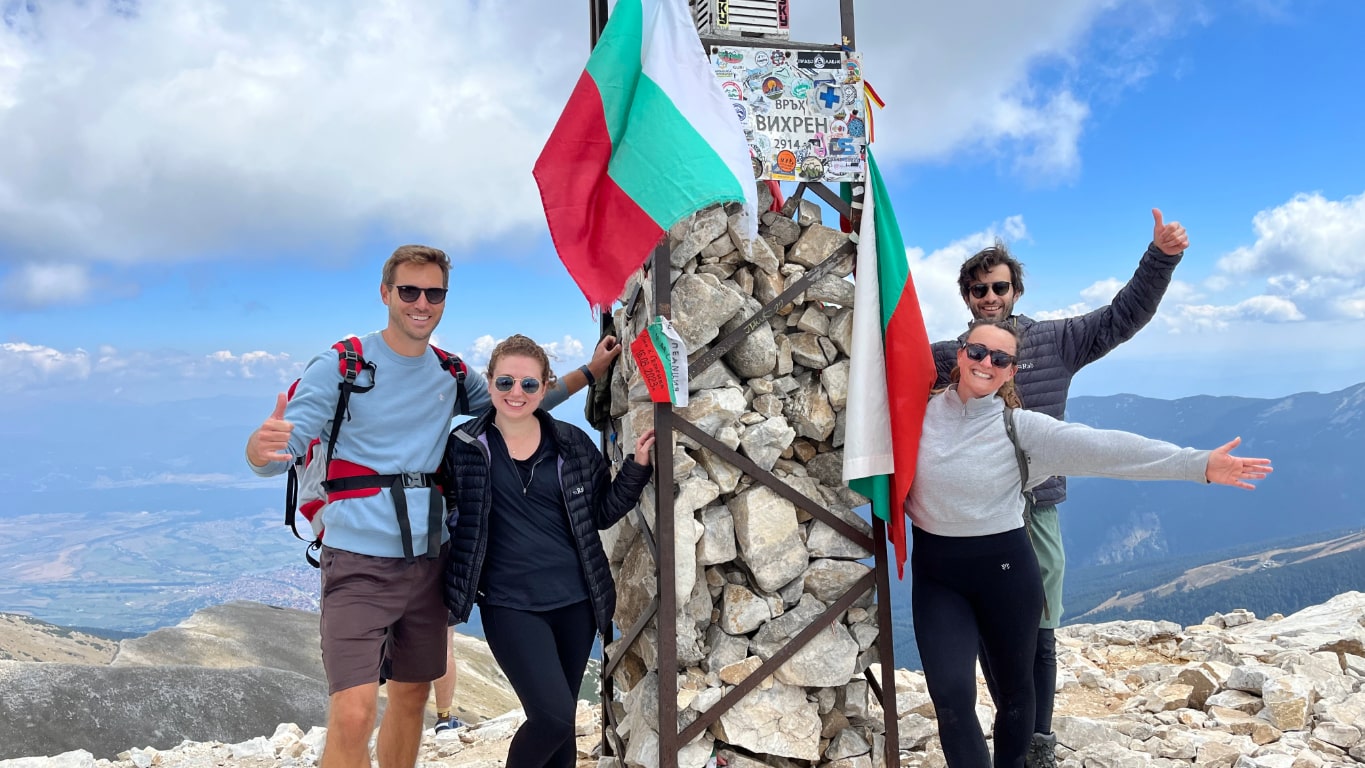
Safety
Bansko is one of those places where I don’t even think about safety, and that says a lot. It feels completely relaxed and secure, even walking home late at night on your own. If you’re a solo traveller, this is a dream.
Things To Do
Goodness me. Where do I start? The answer really depends on when you’re visiting.
Skiing and snowboarding
Bansko is first and foremost a ski resort – so I’ll start with the obvious.
The slopes aren’t massive, but they’re perfect if you’re here for the season and want to balance work with time outdoors. I learned to ski here in 2021 and still can’t quite believe I got to spend my weekends flying down mountains and drinking hot wine in ski bars.
Altspace also runs some fun winter events like “Charcuterski” (cheese, meat, wine, and skiing – what’s not to love?), which adds to the whole magical, snow-globe vibe.
You can read my blog post, the Ultimate Guide to Skiing in Bansko, to get up to speed on all things ski.
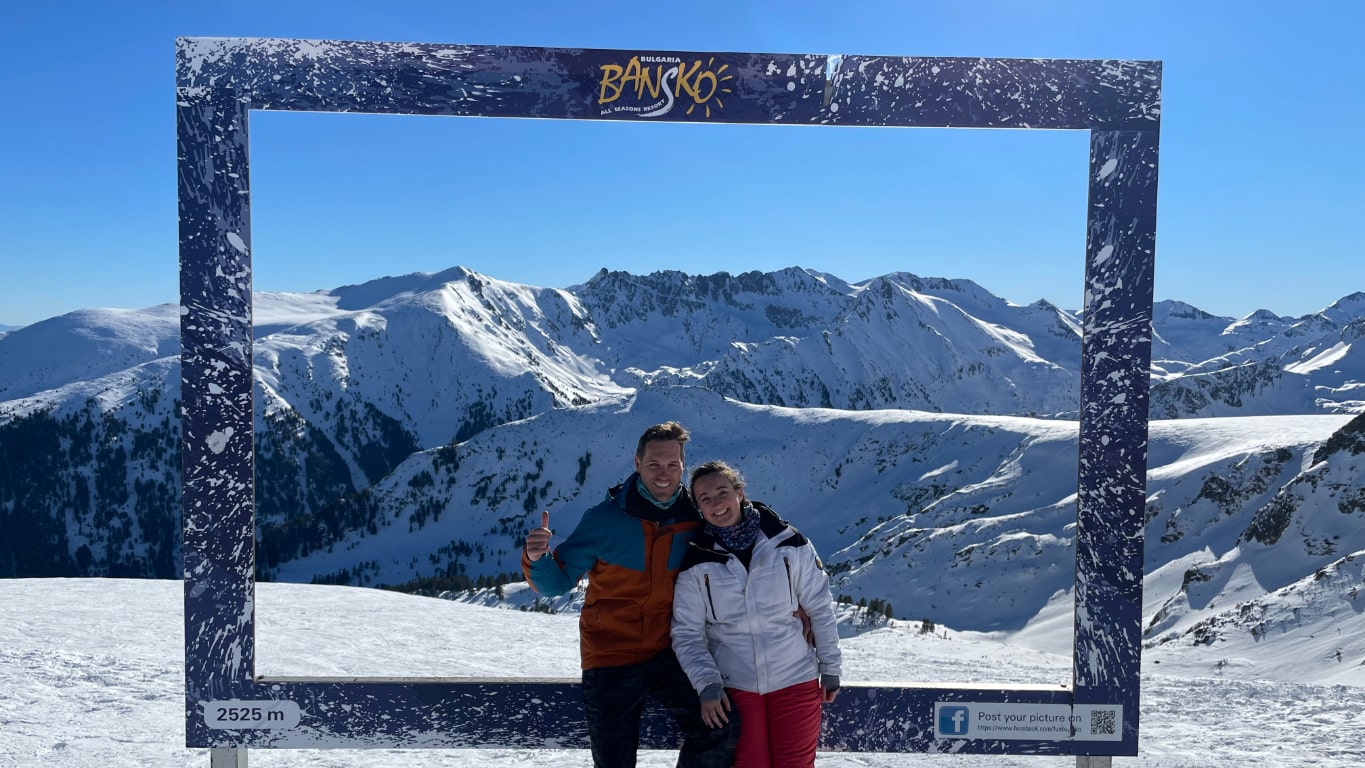
Hiking
The mountains are not only ridiculously beautiful in the winter, but in the summer too.
Whether you’re a confident hiker or not, it doesn’t matter. There are trails for everyone.
From hiking to the peak of Vihren Mountain (one of the hardest things I’ve done!) to walking around the many lakes in the Pirin National Park, you’ll be blown away by the nature and the beauty up there. It’s totally untouched and stunning and is a great way to escape the heat of the town in summer (which gets surprisingly hot given the elevation).
There are also some great trails in the surrounding towns too so for avid walkers, you won’t get tired of hiking in Bansko.
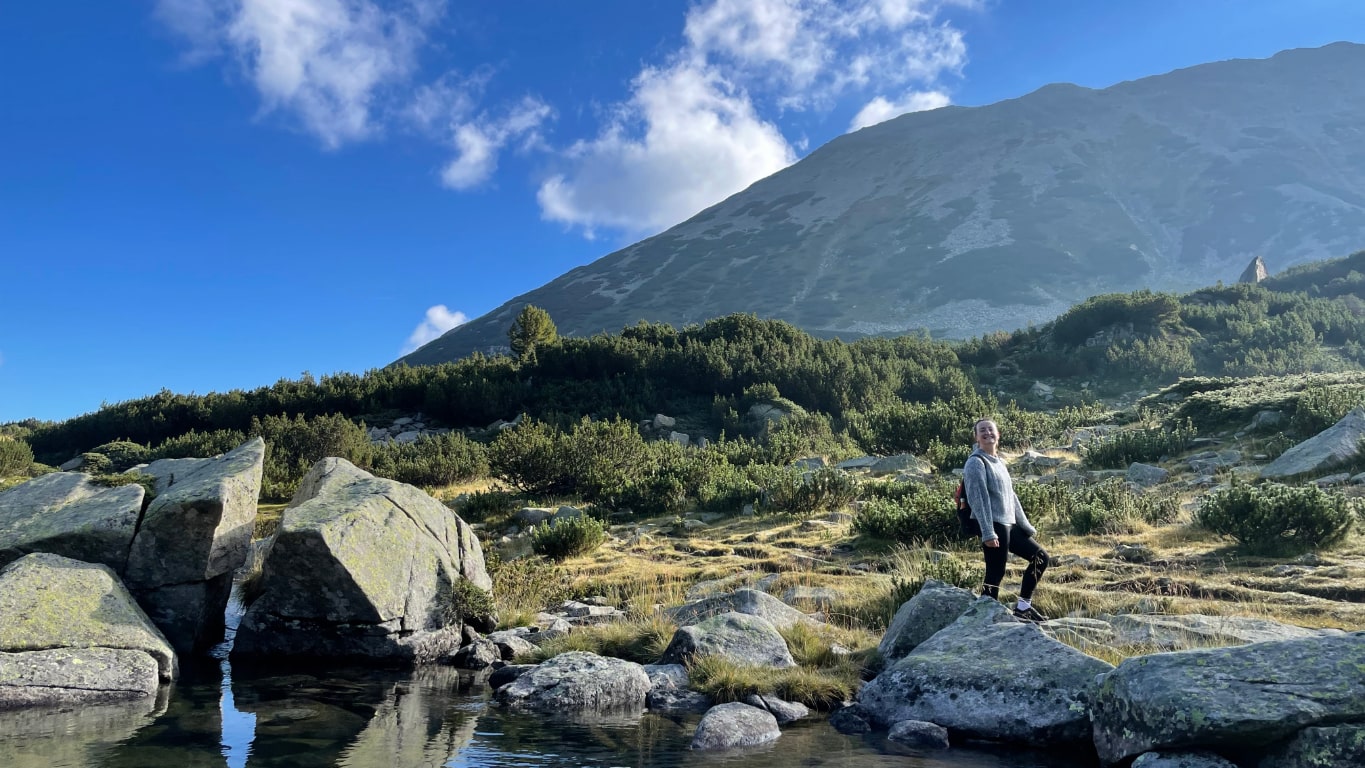
Pools and Hot Springs in Bansko
Whether in winter or summer, one of my favourite things to do is hit the pool. Sitting in a steaming outdoor pool in the middle of winter with snow all around you? Pure bliss. In summer, it’s Aperol spritzes by the pool.
You can read my blog post, Best Hot Springs in Bansko, for an overview of my favourites.
Ease of Living
This is a big one for me. You can have the best scenery and fastest Wi-Fi in the world, but if life feels like a constant admin battle, I’m out.
Ease of living is such an underrated factor when choosing the best digital nomad locations, and Bansko absolutely nails it.
- You don’t need a car – everything is walkable.
- The Wi-Fi is brilliant.
- The food scene is varied and tasty (and affordable).
- The tap water is clean and safe to drink (and actually tastes good!).
- There are gyms, yoga studios, coworking spaces, community events, food delivery apps, grocery home delivery…
- And English is widely spoken, thanks to the influx of nomads and the tourist scene.
It’s just an easy, no-drama place to live, work, and enjoy life. And sometimes, that’s exactly what you need to reset and recharge after a period of heavy travel.
And for those reasons, it’s one of the best digital nomad locations for me.
Cape Town, South Africa
Cape Town is, without question, one of the most breathtakingly beautiful cities I’ve ever been to. It’s the kind of place that makes you pause mid-sentence to take in a mountain or a stretch of glittering ocean. It’s vibrant, a little chaotic, wildly photogenic, and absolutely packed with things to do.
When people ask me, “What’s the best place you’ve been as a digital nomad?” I don’t even hesitate – it’s Cape Town. Hands down. It’s that good. Mountains, beaches, world-class food and wine, incredible hiking, creative energy, a sense of wildness… It’s the full package.
But, and there is a “but”, it’s also a place where you need to be a bit more aware, more prepared, and more flexible than in some other nomad hotspots.
That said, would I still recommend it? Absolutely. Just go in with open eyes, and I think it could be on your list of best digital nomad locations before you know it.
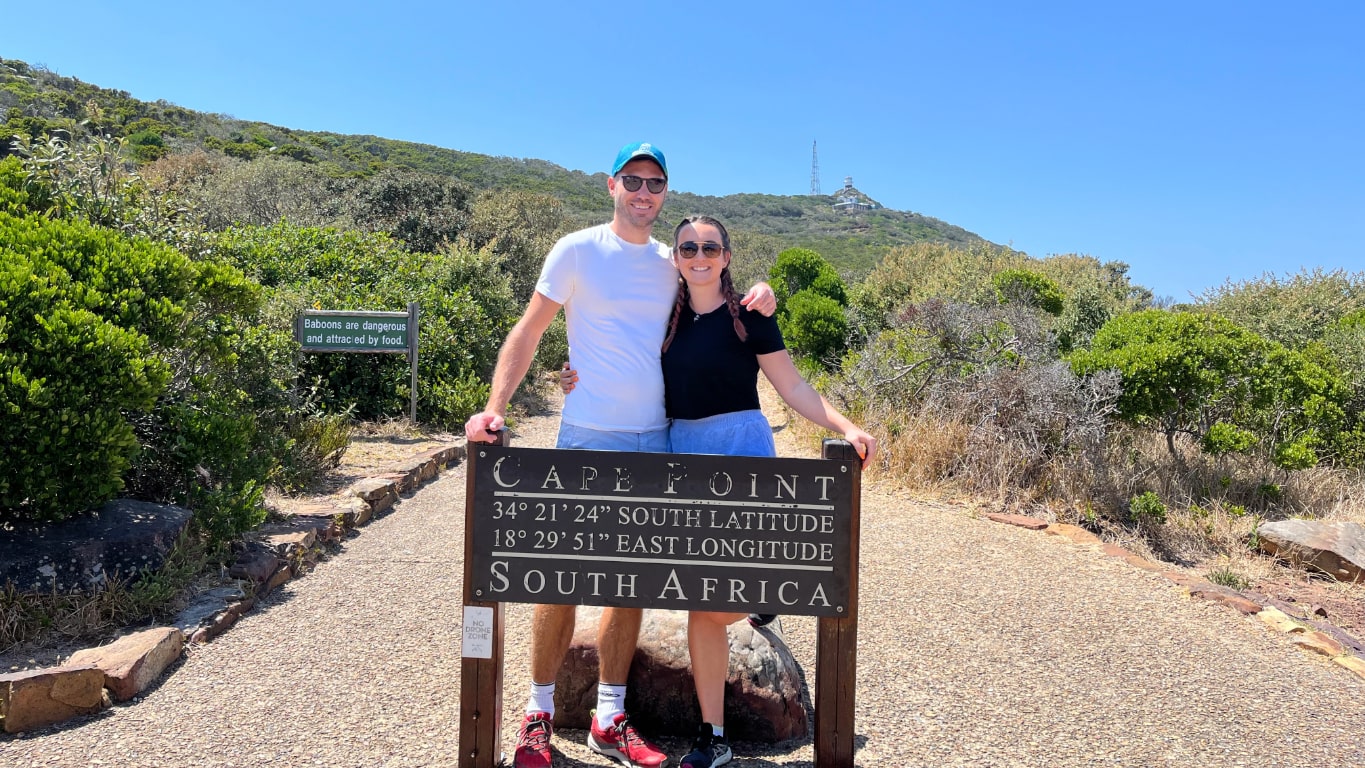
Coworking & Wi-Fi
Cape Town has decent Wi-Fi and plenty of coworking spaces, but it comes with a quirk: loadshedding. These are planned power outages that happen across the country due to energy supply shortages.
In short, South Africa experiences planned power outages – sometimes a few times a day – to help manage electricity demand. And yes, it’s as frustrating as it sounds. Some days, you might have four two-hour outages spaced throughout the day. Other days might be better (or worse). It all depends on what “stage” the country is in, which you can track using apps like EskomSePush.
So, how do you actually get work done? Coworking spaces. Honestly, they are your best friend here – most have backup generators or uninterrupted power supplies (UPS), which means they stay on when everything else goes off.
I worked from a few different spots and found the coworking scene in Cape Town to be really good.
Some of my favourite coworking spaces include:
- Workshop17: This is a Cape Town classic with several locations, but the one at the V&A Waterfront is a dream. Beautiful space, views of Table Mountain, solid Wi-Fi, coffee on tap – yes please.
- Ideas Cartel: A bit more upscale and design-forward. Feels like working in a boutique hotel.
- Neighbourgood: They combine coliving with coworking and have great community vibes. If you’re staying long term, this is a good one to check out.
- WeWork and Spaces are also available and familiar if you’ve worked from these elsewhere. We went to Spaces and rented a small office as it suited us at the time and worked out a similar price to coworking (I needed a space for constant calls at the time!).
Most of these are based in or near the CBD, and a big bonus here is that this part of the city is often less affected by load shedding due to the central business infrastructure. Still, check before you go and always ask about backup power.
Community
There is a fabulous community of digital nomads, expats, and remote workers in Cape Town who host meet-ups and organise events depending on what you’re into.
We had friends who visited Cape Town before us who recommended we join a WhatsApp group for digital nomads, and I would highly recommend you do the same.
The group is split between different ‘interests’, one for hiking, one for eating, one for surfing, for example, so you can meet with people who enjoy the same things you do. We went on a sunset sailing trip and saw whales one evening via the group, and met some super interesting people, all while sipping and sailing. A really cool evening that I’ll remember forever, all organised via a WhatsApp group.
If you’re not into “organised fun”, it’s also great to meet people just for a drink or to watch the sport.
What I’m saying is that there is a community available at the end of your fingertips, should you want it. And that’s outside those you’ll meet at your coworking or coliving, should you join one.

Cost of Living
Cape Town is one of those cities where the quality of life feels high. Beautiful views, great food, adventure on your doorstep – but not necessarily “cheap” in the way some nomad hotspots are.
Accommodation is not as cheap as you might expect. I stayed in a one-bedroom apartment in the CBD, and it cost around £1,000 a month via Airbnb. It was tiny, had no air con, and for that price, I’d honestly hoped for a bit more. You can easily spend more in popular neighbourhoods like Sea Point, Green Point, or Camps Bay – think upwards of £1,200–£1,500/month for a one-bed in a good location.
If you’re looking for better deals, check out longer-term rentals through Facebook groups or head slightly inland to areas like Gardens or Observatory — still great locations, a bit more local, and often more affordable.
Food & drink, on the other hand, is wonderfully affordable. A decent meal out will cost around €6–€10, and you can get proper, next-level food here. I’m talking tasting menus (although maybe not for €6!), inventive brunches, and everything in between.
And the wine… oh, the wine. You can get an incredible glass of locally produced wine for €2–€3. Wine tasting days out are honestly some of my favourite Cape Town memories, and you don’t have to spend a fortune to feel like you’re living the high life.

Safety
Safety is the one thing that might hold Cape Town back from being the best digital nomad location, but it doesn’t have to be a deal-breaker.
You do need to be far more street-smart than in Bansko or Canguu, but if you just exercise a bit of caution, you’ll be okay! I recommend:
- Stick to known safe areas like Sea Point, Green Point, Camps Bay, Gardens, or the CBD. These areas are well-lit, relatively safe, and full of other nomads or tourists.
- Use Uber instead of walking at night. It’s extremely cheap and very reliable.
- Don’t flash valuables, and ideally don’t walk alone after dark, especially in quieter or unfamiliar neighbourhoods.
The thing is, despite hearing all this, I never felt unsafe in Cape Town. I was cautious, yes, but never scared. You’ll hear horror stories, but also remember that bad experiences tend to get shared more than the thousands of good ones.
Things To Do
I mean, where do I start?
Cape Town is jam-packed with things to do. Every weekend felt like a mini holiday. There’s this magical quality to the light, the scenery, the variety of landscapes… I kept saying to Aaron, “Everything looks like it’s in HD!” It’s one of the reasons they film so many adverts here.
Here are a few of my favourite memories from Cape Town, which made it one of the best digital nomad locations:
Wine Tasting
One of the best days out we had in Cape Town (although I can’t say the same for the day after, where I paid for trying all those wines…). We took the Franschhoek Wine Tram (highly recommend the Navy Line) and spent the day hopping on and off at vineyards, drinking delicious wine, and eating our way through cheese platters and small plates. There’s something so amazing about gliding through the vineyards with a little wine buzz and the sun on your face.
The Franschhoek Wine Tram has many different lines, but if you opt for the Navy Line, you can get there via City Sightseeing (the open-top red buses), which was easy and stress-free and removed the need for Uber / Taxis. It’s about an hour away, and we’d heard that there often weren’t any Ubers around to bring you back to the city, so this is a great way to avoid that.
You can book your tour using this link.
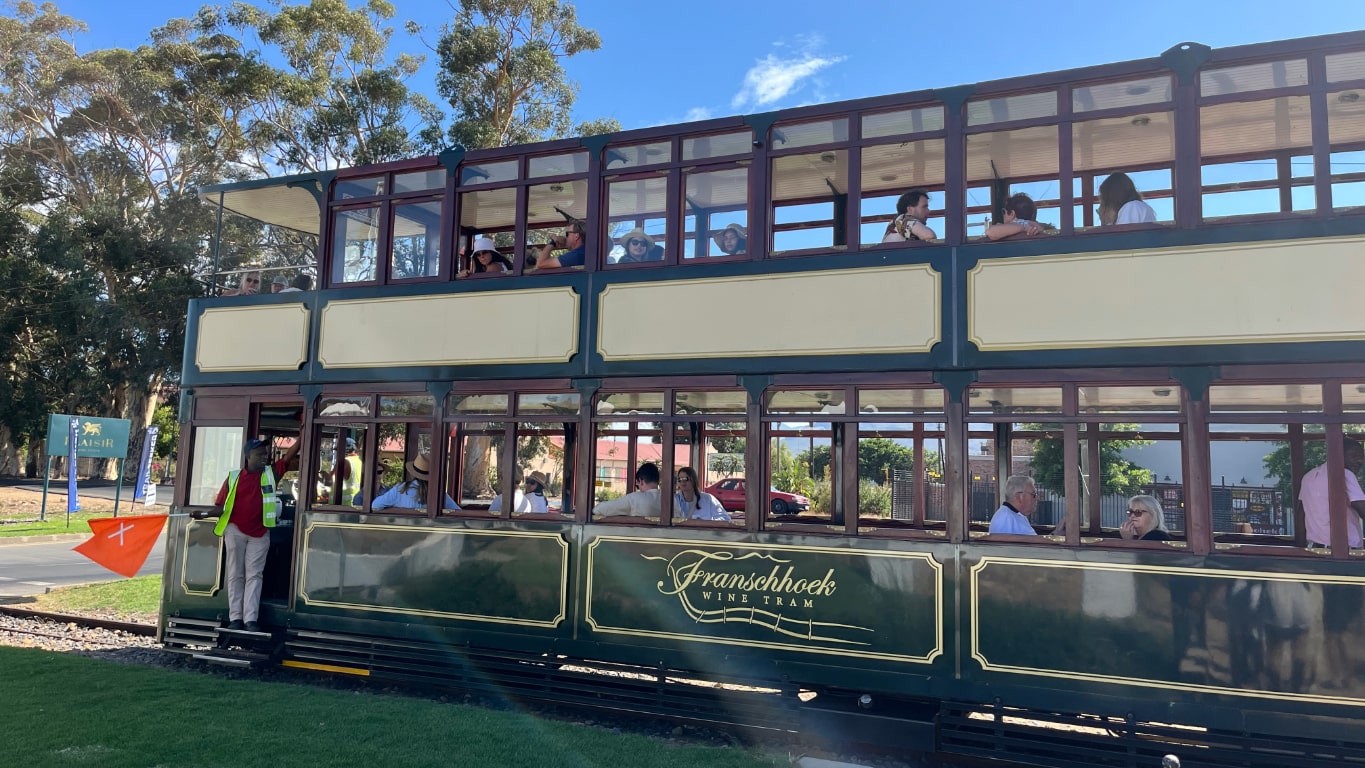
Hit the beach
Cape Town beaches are unreal. White sand, dramatic cliffs, and freezing cold water. Clifton 2nd Beach is my favourite – relaxed vibes, amazing views, and safe. Just brace yourself. The water is icy, even in summer, due to the freezing Antarctic currents. I never made it above my knees. Aaron did the whole hog and is still with us, though.
Still, I loved Clifton 2nd and 3rd Beach for a relaxed afternoon. Camps Bay is great for sunset drinks and people-watching, and Muizenberg (on the other side of the city) is fab if you fancy trying surfing (or at least watching the pros!).
Cape Point + Penguins = 10/10
This was a top-tier nomad day. We drove down the coast to Cape Point, with a stop at Boulders Beach to see the famous African penguins. You can swim near them (though they’re usually doing their own thing), and it’s just surreal to be sitting on a beach next to a waddling colony of penguins.
Cape Point itself is epic — think towering cliffs, endless ocean views, and hiking trails. It’s technically where the Indian and Atlantic Oceans meet, and the energy here is wild and windswept in the best possible way.
We actually went with, you guessed it, the City Sightseeing crew (Red Bus!), who did a brilliant, low-key “tour” which I would highly recommend. You can book it here!
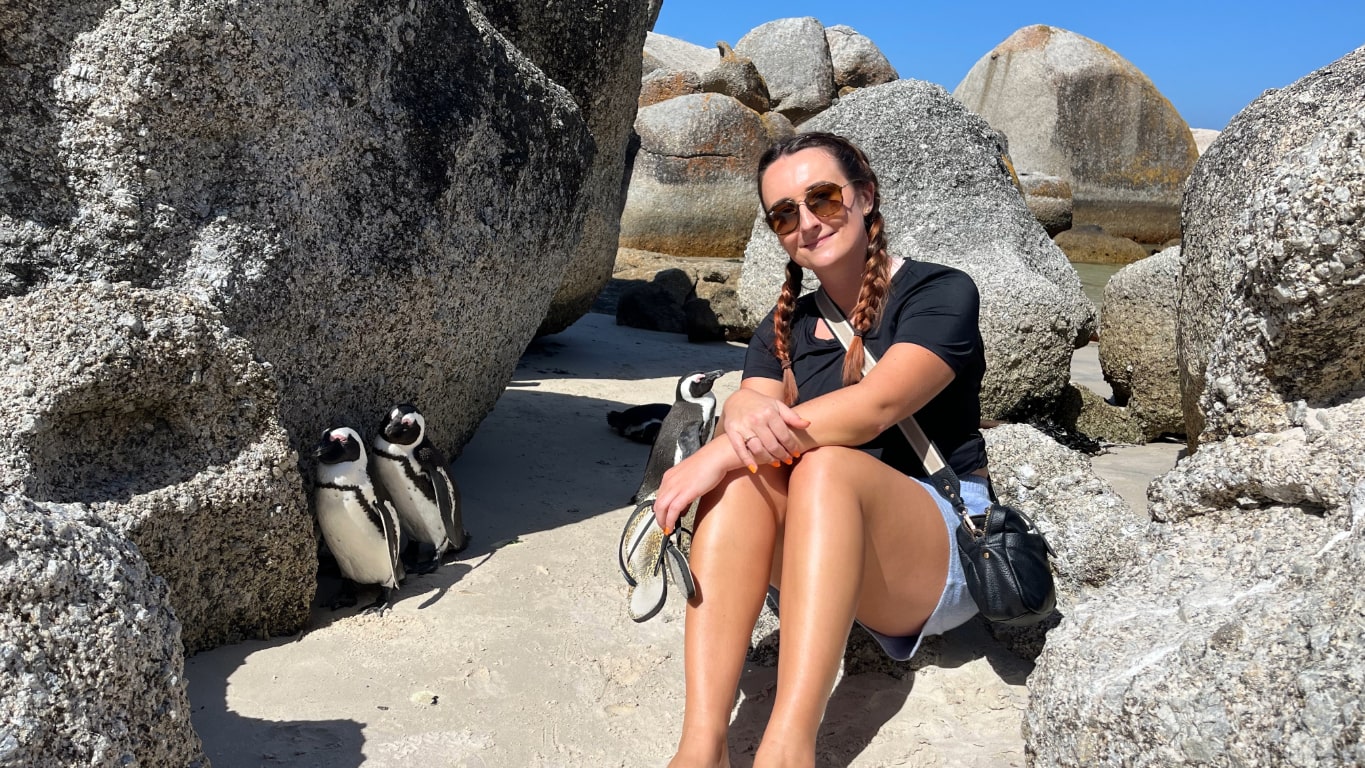
Ease of Living
This is where Cape Town really shines.
- Language: English is widely spoken, so it’s incredibly easy to navigate day-to-day life.
- Time zone: Only two hours ahead of the UK and one hour ahead of most of Europe – perfect if you work remotely with clients or teams based there.
- Transport: Uber is cheap, reliable, and widely used. We rarely used anything else, and it made getting around super easy.
- Shopping, groceries, gyms, and healthcare: All readily available and very modern. Cape Town isn’t a remote jungle outpost – it’s a cosmopolitan city with all the essentials
- Visas: South Africa allows many nationalities a 90-day visa-free. There is a new digital nomad visa, but it does have quite a high income requirement!
Best time to visit Cape Town
Cape Town is in the southern hemisphere, so December to March is summer and perfect for beach days, hiking, and wine. But be warned, January is peak season and prices reflect that (which is probably why our apartment was so expensive – we went January to March). Shoulder months like November or April are a great sweet spot.
Winters in Cape Town are mixed, but I am told they’re generally pretty cold and miserable. I wouldn’t recommend visiting them, as you won’t be able to enjoy the gorgeous outdoor lifestyle, which makes Cape Town one of the best digital nomad locations.
Canggu, Bali
If there’s a digital nomad capital of the world, Canggu is definitely in the running. It’s the kind of place where surfboards outnumber umbrellas, and you’ll probably hear three different accents ordering flat whites before you even sit down. It’s young, vibey, chaotic in the best way and a total rite of passage if you’re in the remote work game.
Would I live here long term? Probably not (it’s just SO busy!). But would I come back again for a few months of sun, smoothies, and scooter rides? Absolutely.
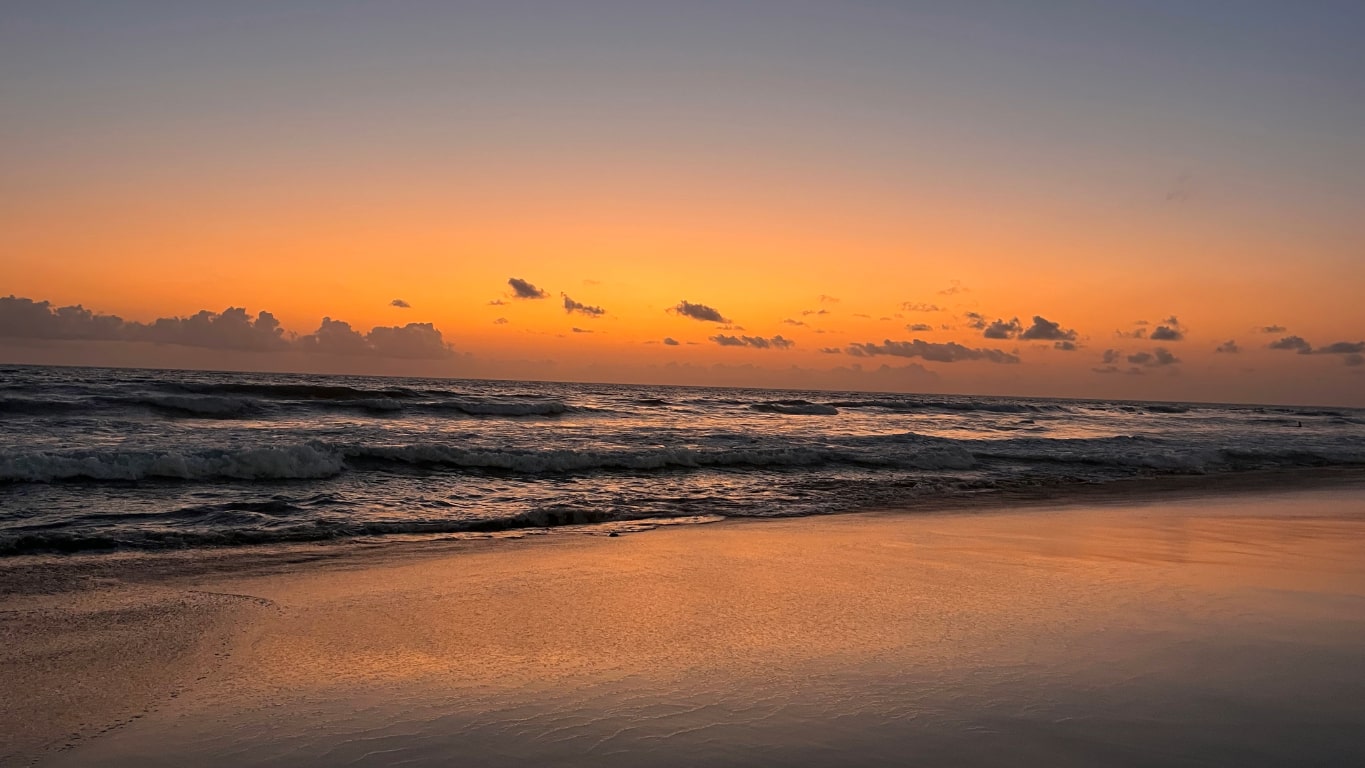
Coworking & Wi-Fi
Coworking in Canggu is practically a lifestyle. You can’t swing a coconut without hitting a MacBook.
Some of the big ones are Dojo, BWork and Tribal all of which come with aircon, decent coffee, a mix of focused and social zones, and most importantly, reliable Wi-Fi.
The Wi-Fi is generally good across Canggu, but it can drop out during storms or in more remote areas (this is still Bali after all), so a coworking space is a bit of a no-brainer if you’re working full-time.
Dojo is the original Canggu coworking hangout, just a stone’s throw from Echo Beach, and it’s got that classic Bali-nomad-meets-surf-vibes thing going on. Outpost is great if you like a quieter, more polished setup. And BWork is newer and really slick, with lots of people rating it highly for networking and events.
I actually went to AT 06, which is a very small coworking space near where I was staying. It had a small gym, a pool, and coworking, and it was really well priced, whereas coworking can be expensive in Canggu. Because it was small, it did get busy, but we really enjoyed going there and always got a desk and some room in the gym to work out. It also has a plunge and a jacuzzi that you can use post-workout. And man, that plunge pool is like ice!
If coworking isn’t your thing, most cafés are laptop-friendly. Just check they have plugs and ask if they have a coworking policy – some now limit laptop use during peak brunch hours (fair enough, really).
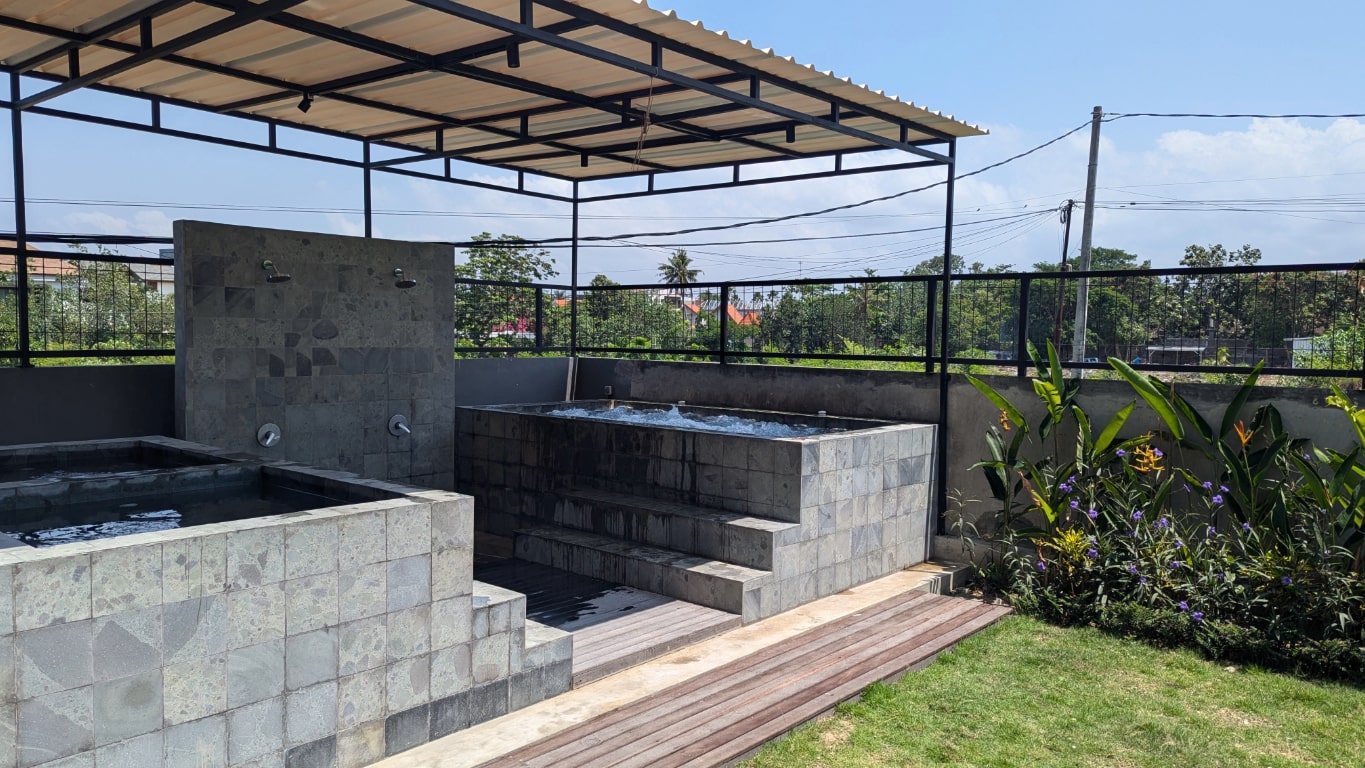
Cost of Living
While Bali can be a budget-friendly destination, it’s also somewhere where your money can go a long way. You can live a very nice life on far less than you’d need in Europe or the US, for example.
- Accommodation: For a comfortable one-bedroom villa or apartment with A/C and a pool, expect to pay €800–€1,500 per month. Villas closer to the beach or the Batu Bolong area will be at the higher end. You can go cheaper if you opt for something simpler or further inland (Pererenan is still a great option and slightly less pricey).
- Cafés & Eating Out: You’ll be spoiled for choice when it comes to food. Brunch culture is huge here, and you can expect to spend €6–€10 per meal at the trendier cafés. If you want to splash out, a three-course dinner with cocktails will set you back around €30–€40 at a more high-end restaurant. Warungs (local restaurants) are still a great option too – you can get a big plate of nasi campur or mie goreng for just a couple of euros.
- Transport: Renting a scooter is the main way of getting around. It’s around €50–€70 per month, and petrol is cheap. Just be mindful of the traffic – it’s real. We often opted to Grab instead (call a moped taxi) just to avoid the mental strain/terror of navigating chaotic junctions and the most narrow “roads” I have ever seen.
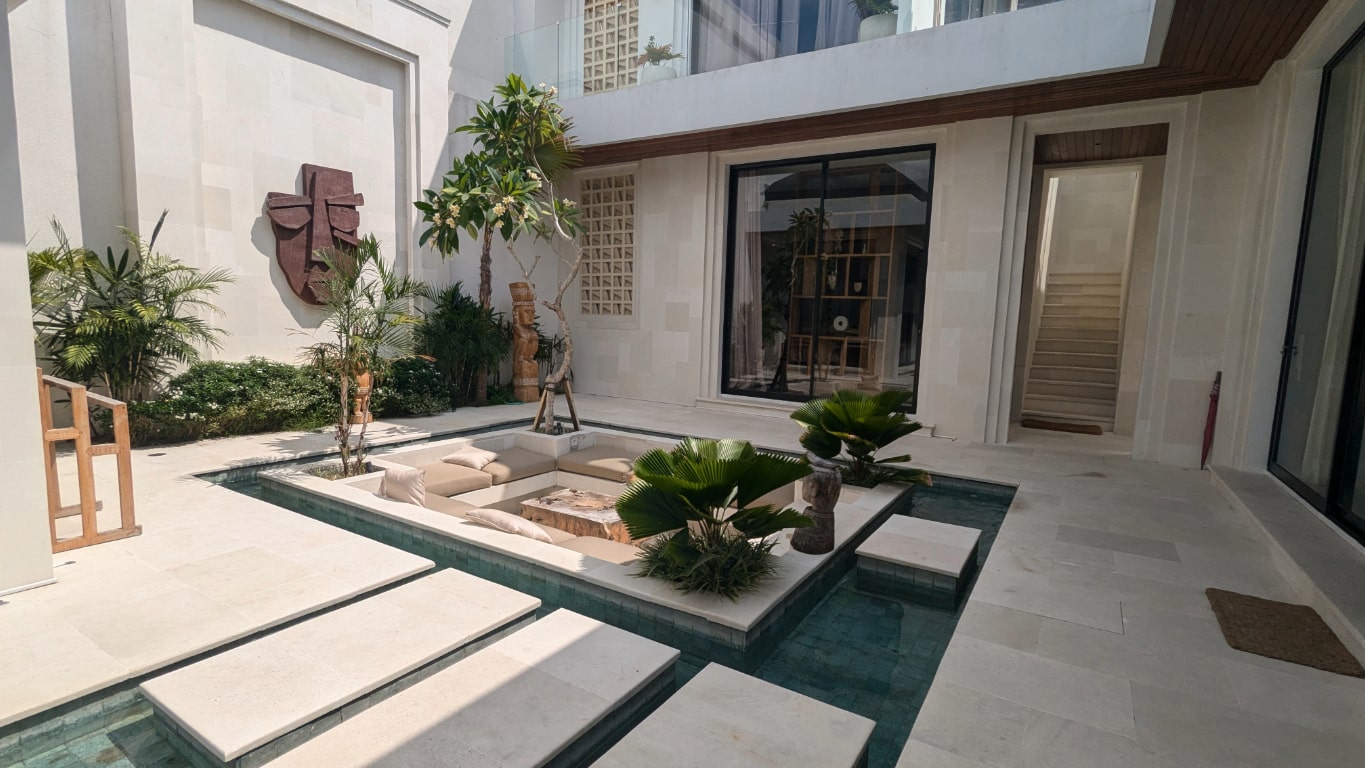
Safety
Bali is safe on the whole, but scooter accidents and petty theft are the two big things to look out for. Never leave your bag in the front basket of your bike, and don’t leave valuables visible in cafés. It didn’t happen to me, but apparently it does happen, and it’s not a bad habit to build in!
On the topic of scooters, don’t expect traffic rules to apply in the same way they do at home. Drive slowly, stay alert, and you’ll get used to the Canggu chaos pretty quickly – and be prepared for chaos. I’d say you need to be a relatively confident moped driver to tackle Canggu. We just rented Grab’s everywhere (and Uber alternative with a moped hauling option) on the basis that the Grab drivers know what they’re doing and they’re SO cheap.
Health-wise, Bali Belly is real, and it’s not fun. While I am convinced there is no way of avoiding it, the usual rules apply: Stick to bottled water, go easy on the ice if you’re somewhere that seems a bit too rustic, and maybe pack some rehydration sachets just in case. But yes, we were careful and still got it – it’s part of the package, I think!
Things To Do
Oh, where do I begin? Canggu’s got a magic combo of beach, wellness, nightlife, and nature. Here are three things that really stood out and made it, for me, one of the best digital nomad locations:
Go to a Beach Club
Canggu is basically beach club heaven. Whether you want to sip cocktails with a DJ at sunset or chill with a book by the pool, there’s something for every mood.
The Lawn and Finns are your go-to for party vibes – think big weekend energy, cocktails, and a crowd ready to dance by 4 pm.
For something more relaxed, I loved La Brisa (gorgeous boho vibes and great seafood) or Valle for very chill Sunday feels.
You can easily spend an entire day in a cabana with snacks, music, and a few dips in the pool and not feel the tiniest bit guilty about it.
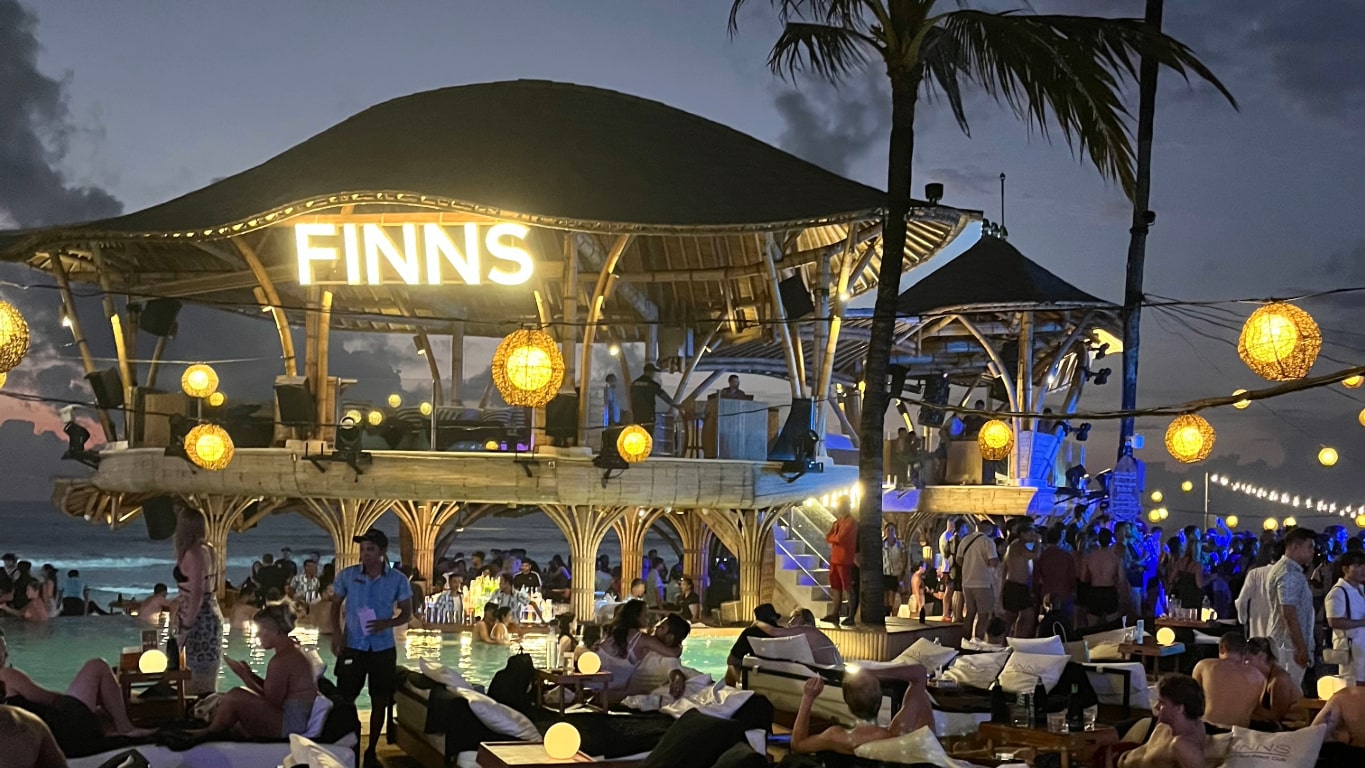
Indulge (the main reason Canggu is one of the best digital nomad locations!)
Bali is made for pampering. Whether you want massages, a facial, a mani-pedi or to fix your sun-damaged hair, you’ve got options galore.
Ameline Spa was my absolute favourite. I got my nails done and a cream bath (if you don’t know what that is, trust me, you need one in your life). My hair was SO soft and it was such a treat, genuinely one of my favourite things ever.
Carla Spa is another good shout. It’s more basic but very affordable, and perfect if you want a quick massage or facial without breaking the bank.
Eating out is another form of indulgence here. There are just so many great cafés, and it’s affordable enough that you can eat out for nearly every meal. We got sick of eggs and avocado on toast at one point (which I didn’t know was possible).
You’ll find everything from vegan cafés and poke bowls to wood-fired pizza and Asian fusion. Whatever you like, it’s here.
Get Fit
Wellness and fitness are huge parts of life in Canggu. Whether you’re into yoga, surfing, CrossFit, or just want to find your rhythm again, it’s a great place to feel healthy and motivated.
There are boutique gyms, beach bootcamps, boxing classes, surf lessons, and yoga studios on every corner.
Wrong Gym, Avenue Fitness and Elite Gym are great gyms.
For yoga, The Practice and Samadi Bali are both lovely.
Surfboards can be rented on the beach or through your accommodation, and lessons are easy to book, even last minute.
It’s a place where you can live well. Wake up, go to yoga, have a smoothie, do some work, hit the beach, get a massage, and still be in bed by 10 pm (or dancing barefoot on a beach until 2 am, your choice).
Ease of Living
Canggu (and Bali in general) is a popular long-term base for digital nomads for a reason. The infrastructure is solid (especially in places like Canggu), and everything is set up to cater to the expat crowd.
English is widely spoken, most places accept cards or have cashless options, and there are loads of great co-living and co-working options if you’re just starting out. There are so many reasons it’s one of the best digital nomad locations!
Visas are fairly straightforward. If you’re planning on staying for less than 30 days, most countries (including travellers from the UK, EU, Aus, the US, etc) will get a Visa on Arrival (which costs about £25). This can be extended online for a further 30 days (at a cost of around £25) so you can easily get a 60-day visa. There are other options if you want to stay longer, which can get you up to 6 months.
Time zone-wise, Canggu is GMT+8, so it’s ideal if you work with Australian clients or don’t mind late-night calls for Europe or the US. Personally, this was one of the bigger challenges for me, as I work mostly with UK clients, so it’s something to consider.
Colombia – Medellín
I’m just going to say it: I absolutely loved Medellín. It’s one of those places that completely flips your expectations. You arrive thinking you know what Colombia is about, and then Medellín hits you with stunning green hills, genuinely kind people, a vibrant city without being overwhelming, and a lifestyle that’s both energising and easy. No wonder it’s become a digital nomad hotspot.
It also doesn’t hurt that it’s spring all year round. The climate is so perfect, they call it the “City of Eternal Spring.” (Honestly, after years of bouncing between sweltering and freezing places, this alone is enough to make you want to unpack your backpack for good.)
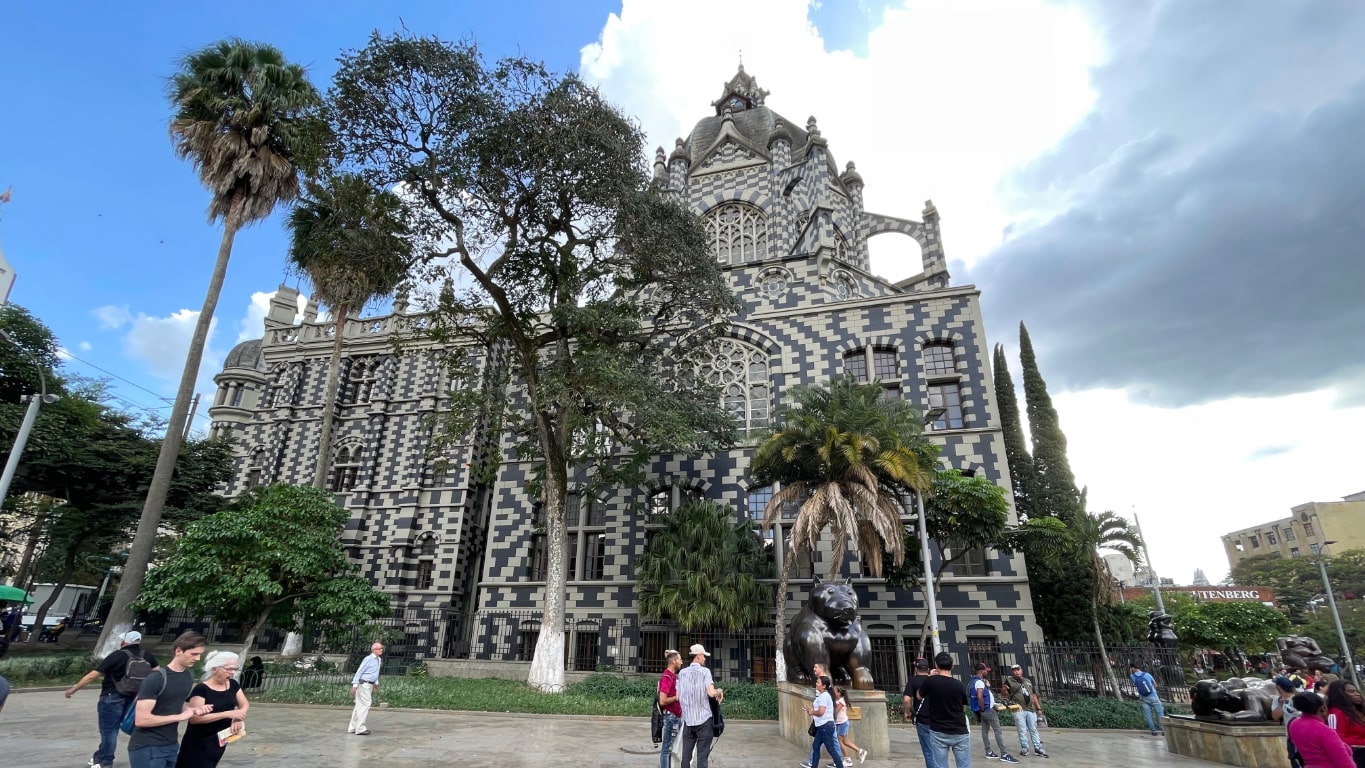
So here’s why it’s on my list of the best digital nomad locations:
Coworking & Wi-Fi
Wi-Fi in Medellín is fast and reliable in most parts of the city, especially in Poblado and Laureles – the two main neighbourhoods where nomads tend to settle. Coworking spaces are everywhere and genuinely lovely to work from, with a chilled-out energy and tons of local freelancers and remote workers.
If you’re the kind of person who needs a desk and a good coffee to feel productive (hi, same), you’ll love places like NOI, Circular Coworking, and Tinkko. A lot of these spaces also double as social hubs, with events, workshops and happy hours. So even if you’re landing solo, you’ll find your crew pretty quickly. For a coliving type vibe, Masaya is such a cool place with a coworking, pool and community feel all in one spot.
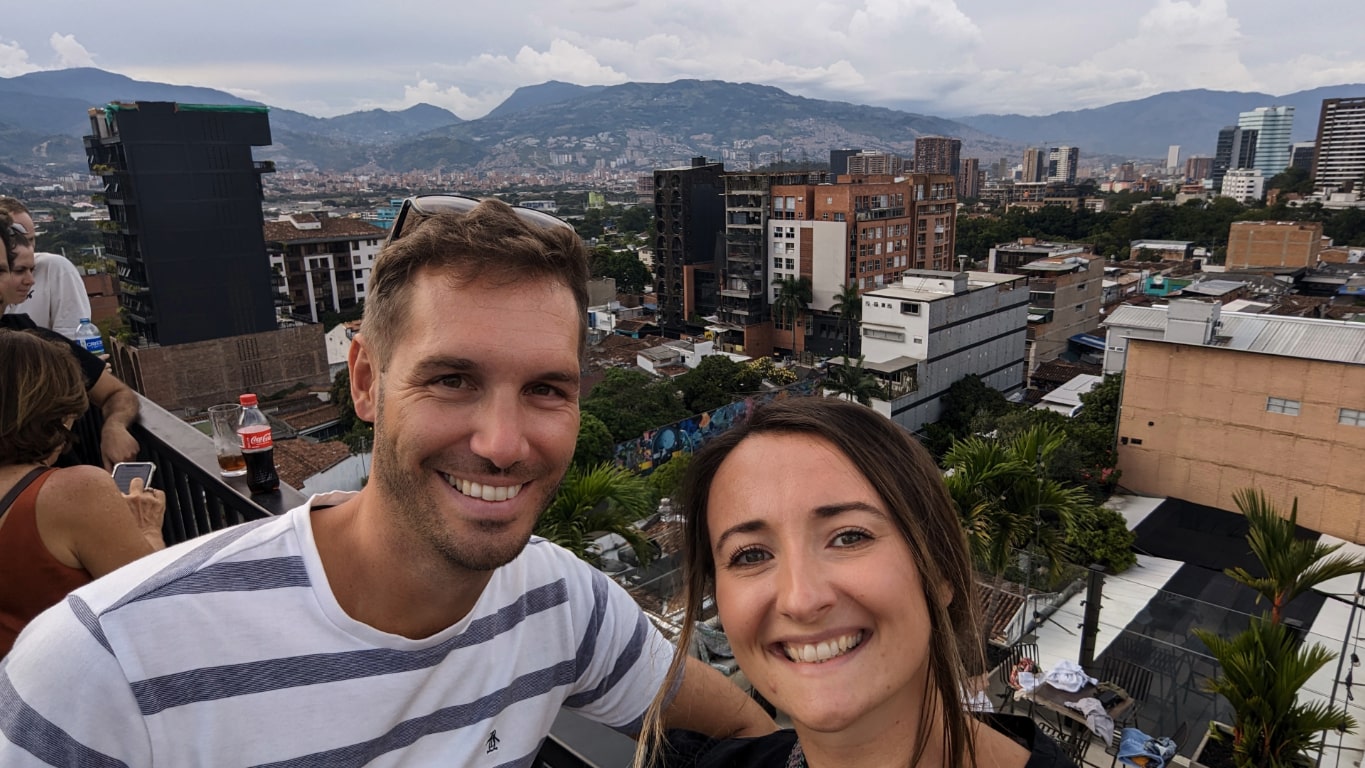
If you prefer to work from cafés, you’re also covered. Pergamino and Al Alma in Poblado have great coffee, strong Wi-Fi, and the kind of laptop crowd that makes you feel right at home.
Cost of Living
Medellín isn’t as dirt cheap as you might think (global nomad hotspots rarely stay secret forever), but for mid-range digital nomads, it still offers incredible value for money.
- Apartments: If you’re after something modern and well-located in El Poblado or Laureles, expect to pay around $900–$1,400 USD/month for a one-bedroom. Lots of buildings come with pools, 24/7 security, gyms, or even co-working spaces, so you’re getting a lot for your money.
- Bills: Utilities are usually included in short-term rentals, but if you’re going long-term, electricity, water, gas, and internet generally come in around $70–$100 USD/month.
- Eating Out: Medellín is very kind to people who love dining out. You can easily eat out several times a week without denting your budget. Meals at stylish restaurants tend to be $10–$20 USD, and brunch is a whole lifestyle here, with favourites like Hija Mía, Café Zorba, Betty’s Bowls and OCI.Mde. And cocktails? Usually around $4–$6 USD in a decent bar. Happy days.
You can still go budget with menú del día lunches – soup, main, rice, salad, juice, and maybe even a dessert for about £3 – but it’s great having both ends of the spectrum.
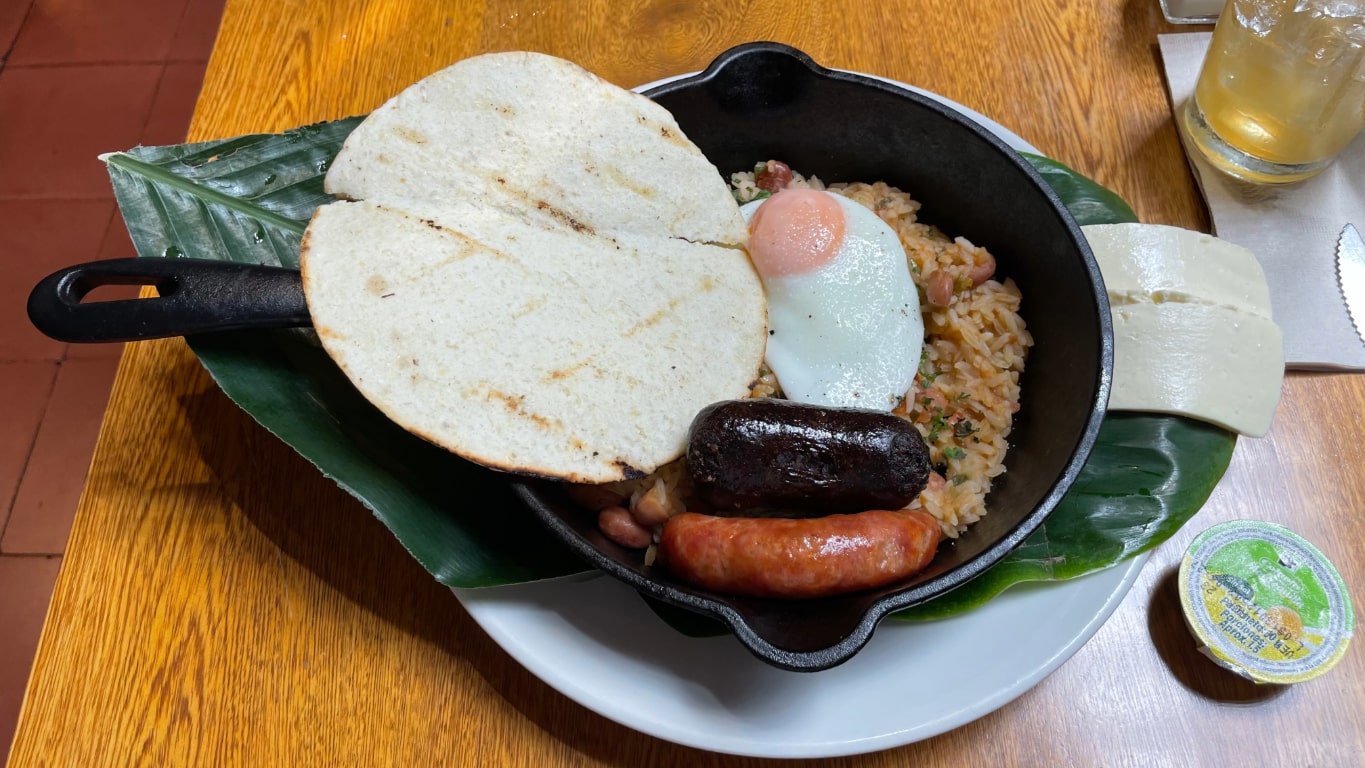
Safety
Okay, let’s talk about it, because yes, Medellín still has a reputation that makes people nervous. And while some of that is rooted in its complicated history, the Medellín of today is not the one from Narcos. That said, you do need to have your wits about you.
Stick to safe neighbourhoods like Poblado and Laureles, don’t flash valuables (just don’t), and take Ubers or trusted taxis at night, they’re super affordable and widely used. Be especially cautious in crowded areas or nightlife zones late at night. I never felt unsafe personally, but I was always mindful – and I think that’s the key here. Be sensible, don’t take unnecessary risks, and you’ll be absolutely fine.
Things To Do
This is where Medellín really shines. Weekends here are for getting outdoors, learning something new, and being inspired by just how much this city has transformed itself. It’s why it’s on my list of best digital nomad locations!
Here are three things I’d recommend:
Ride the Cable Cars to the Top of the City
Medellín’s cable car system isn’t just practical, it’s beautiful. Take Line L up to Parque Arví and you’ll literally rise above the chaos of the city into a peaceful forest. It’s a great little day trip and the views are next level.
Day Trip to Guatapé
This colourful lakeside town looks like something out of a Disney film. All technicolour buildings, cobbled streets, and mountain views. Climbing El Peñol (740 steps!) for the panoramic view is a must. If you can, make a full day of it – I recommend taking a tour for the ease of it. I’d book through Viator here.
But what I would really recommend is staying the night! We stayed at this epic guest house right on the lake, where there is a little pier that you can kayak and swim from. The views in the morning are dreamy. Check it out here.
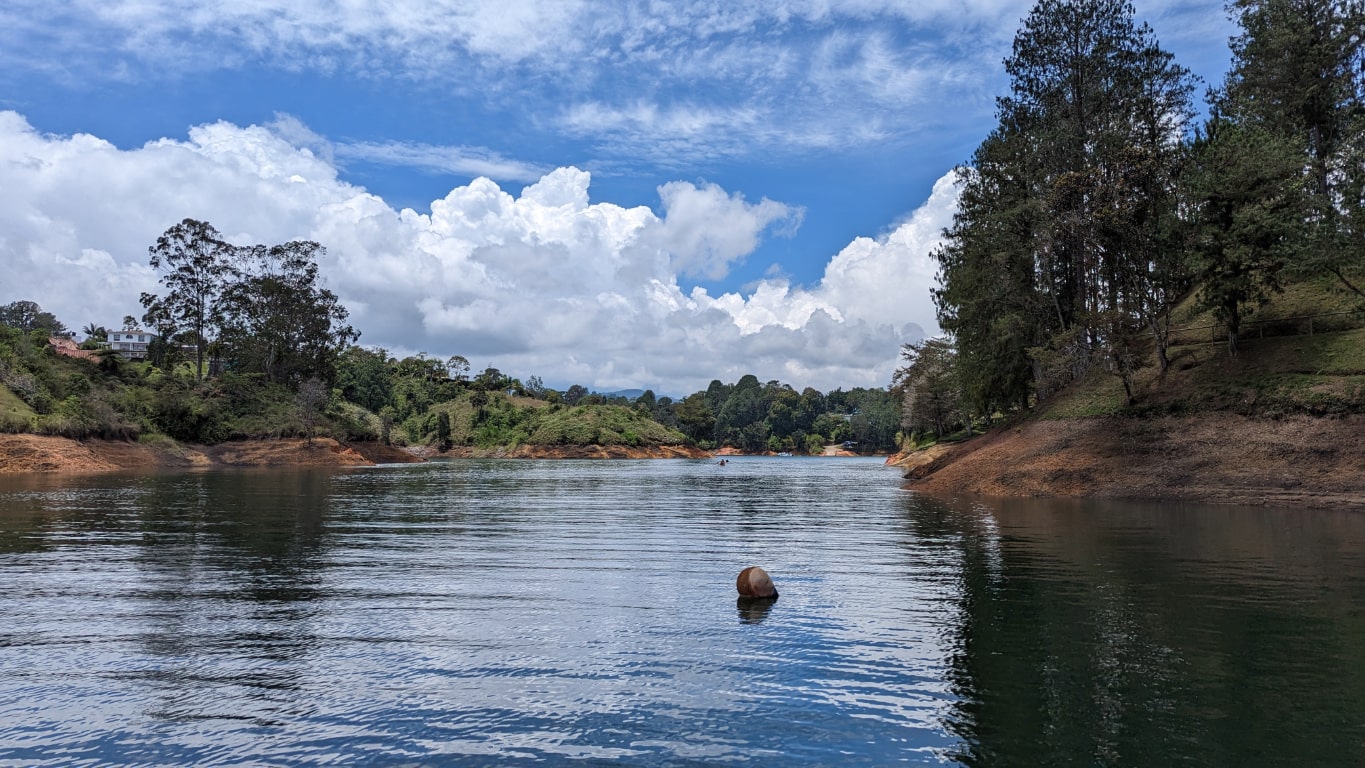
Walking Tours (Highly Recommend!)
We did a walking tour of El Poblado, and honestly, it was such a good way to get our bearings. It helped us discover where to eat, drink, and hang out, and gave loads of context to the neighbourhood. I’d recommend doing it early in your trip. It made such a difference to feeling settled.
We also did the Pablo Escobar tour, which, I’ll admit, I had mixed feelings about beforehand. The locals don’t love his name being brought up, and for good reason. But the tour we did was quite respectful. It didn’t glorify him, but instead focused on what life was like during that time, and how far Medellín has come since. It was genuinely fascinating.
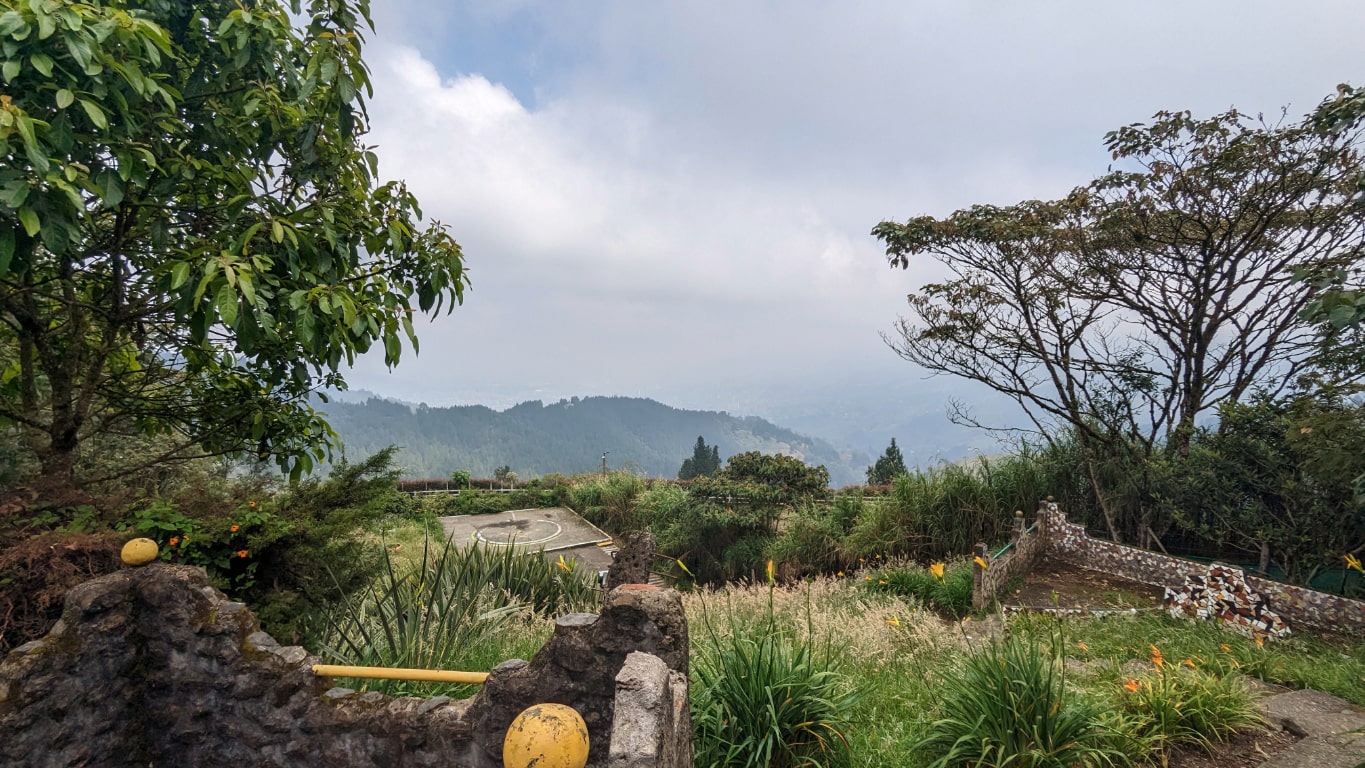
The Comuna 13 tour is also a must. Once one of the most dangerous areas in the city, it’s now a vibrant neighbourhood that tells its story through street art, music and community. The graffiti is amazing, but the history behind it is even more powerful. Take a local guide so you really understand the transformation. And yes, those outdoor escalators winding through the hillside neighbourhood are just as cool as they sound.
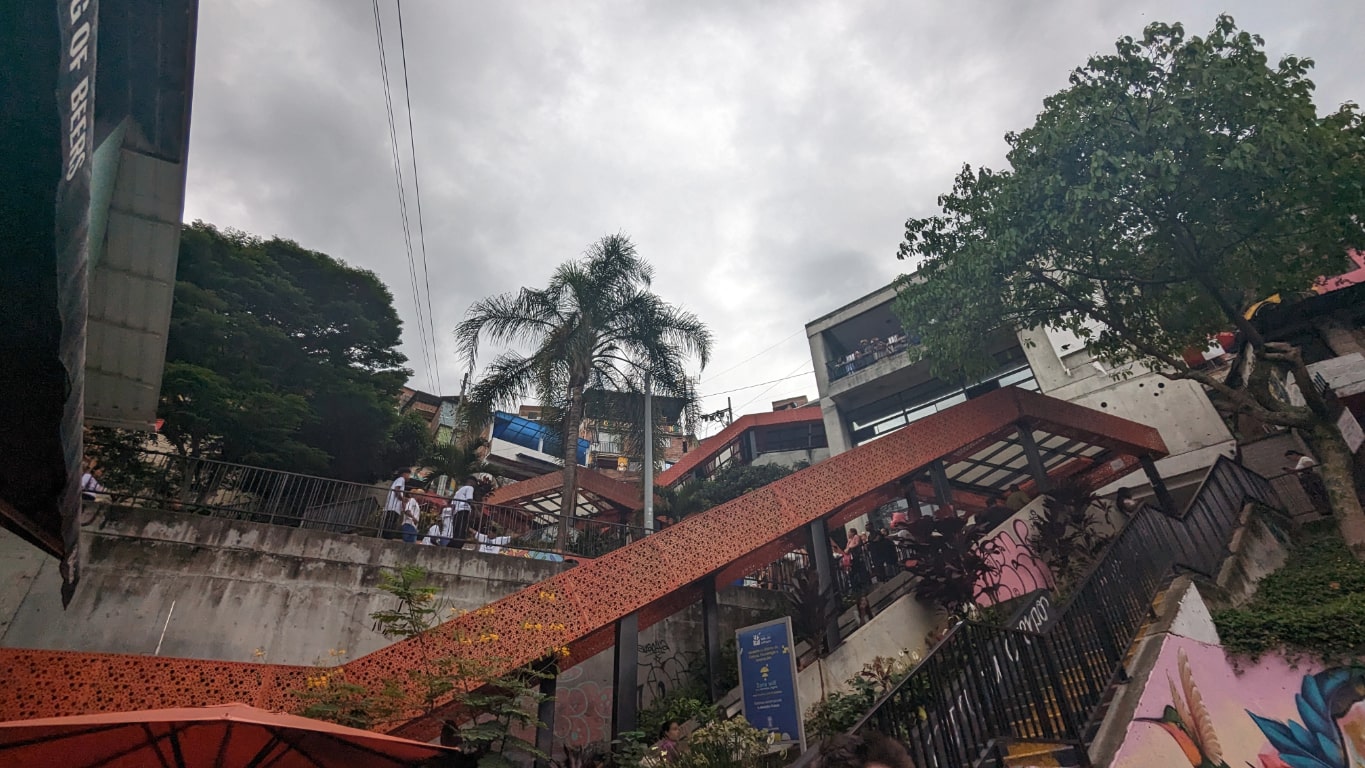
And lastly, don’t miss the Moravia Barrio Tour. It’s a lesser-known but incredibly inspiring experience. Moravia was once a community quite literally built on top of a massive garbage dump. Over the years, residents transformed the area into one of Medellín’s greenest and most hopeful neighbourhoods, with urban gardens, art, and strong community projects. It’s a testament to resilience, and honestly, one of the most moving things you can do in the city. You can book your spots on the tour here.
Ease of Living
Medellín is just so easy to live in, which makes it one of the best digital nomad locations!
- Public transport is excellent. The Metro system is one of the cleanest and most efficient I’ve ever used. Add in cheap Ubers and a walkable vibe in areas like Laureles and El Poblado, and getting around is a breeze.
- English is spoken in a lot of coworking spaces, cafes and by younger locals, but learning even a little Spanish goes a long way. People are so welcoming, and they really appreciate the effort. Speaking Spanish (or learning/trying to!) was one of my favourite things about visiting Medellín (and Colombia generally).
- Visa-wise, Colombia now offers a Digital Nomad Visa, and tourist visas are usually granted for 90 days with an option to extend for another 90, so you can easily stay up to six months without stress.
- Groceries, food delivery and laundry services are all affordable and easy to sort. Rappi (the local delivery app) is a lifesaver, and you can get pretty much anything delivered to your door, from snacks to new running shoes.
Tirana, Albania
Tirana was a total curveball for me, in the best possible way. I didn’t expect to love it as much as I did. It’s colourful, creative, super chilled out, and incredibly affordable. There’s a buzz to it, a sense of something just starting to happen, and if you like the idea of being somewhere before the crowds, this might be one to pin.
It’s not your glossy Mediterranean hotspot, and that’s part of the charm. You’ll find pastel apartment blocks, streets full of people sipping espresso, and a weird-but-fascinating blend of old-school communism and new-world creativity. For digital nomads looking for an affordable European base with an emerging scene and friendly locals, Tirana is definitely one of the best digital nomad locations.
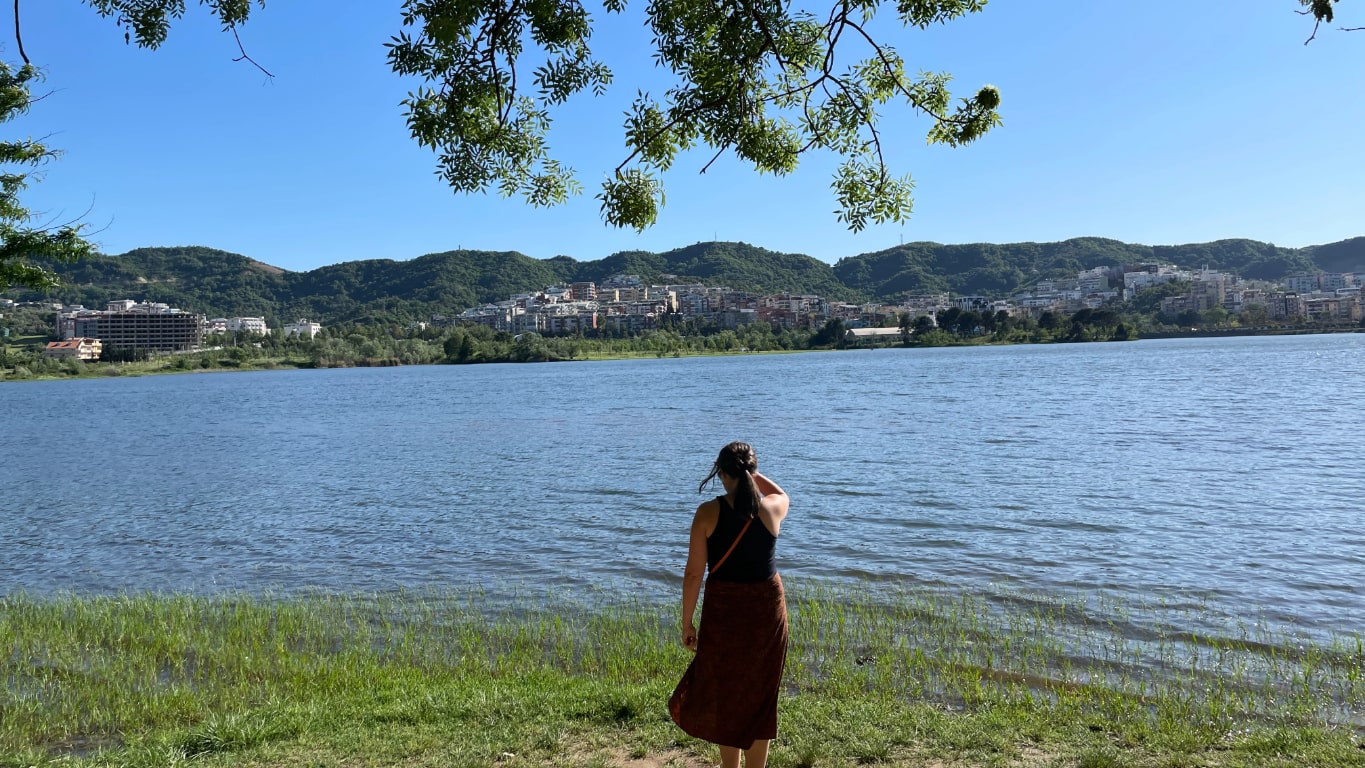
Coworking & Wi-Fi
Wi-Fi in Tirana is generally good. I never had any major issues. Speeds are solid enough for video calls and regular remote work, and you’ll find free Wi-Fi in most cafés.
While Tirana doesn’t have a huge number of coworking spaces, there are a few good ones like Innospace and Coolab. That said, many nomads simply work from cafes, and the vibe here makes that pretty easy to do.
You’ll find locals working on laptops too, and no one rushes you out even if you nurse a coffee for two hours. The café culture is strong and very affordable, just a couple of euros for a flat white and you’re good to go.
Cost of Living
This is hands-down one of the most affordable nomad destinations in Europe, and it’s a great option if you want your money to stretch a little further, but still want to live well.
- Apartments: You can rent a decent one-bedroom apartment for as little as €250–€400/month, depending on the area and how long you’re staying. Most Airbnbs will offer monthly discounts, and we found some lovely, modern places in the city centre for well under €500.
- Eating out: You can absolutely eat cheaply in Tirana. Cafés serve solid lunches for €3–€5, and a coffee is usually around €2. But even at mid-range restaurants, you can have a really nice dinner and wine for two for €20–€25, sometimes less. We found some great restaurants in the Blloku area, which are more stylish, great for date nights or just a change from budget eats.
- Groceries and shopping: Also cheap. Supermarkets are basic but fine. Organic shops and bigger international stores are starting to appear more often.
Safety
Tirana honestly felt really safe. I walked home at night more than once and didn’t feel uncomfortable. It has a very laid-back feel, and I didn’t witness any dodgy moments.
Locals are warm, helpful, and respectful, and most are very proud of how safe and welcoming their country is. Use the usual city smarts (keep an eye on your stuff in busy areas), but it really is one of the safer-feeling places I’ve been in the Balkans.
Things To Do
Tirana has a mix of gritty history, fun nightlife, and easy access to nature, and I think that makes it a great slow travel base and one of the best digital nomad locations. Here are a few things I really enjoyed there:
Explore the vibrant city centre and Blloku area
Definitely do a walking tour when you arrive, especially if you’re staying in or near Blloku. This area used to be the private neighbourhood of communist elites (you weren’t even allowed in if you weren’t ‘approved’). It’s now Tirana’s trendiest district, packed with bars, restaurants, and cafés.
The walking tour helps you understand Albania’s communist past and how it’s shaped the city. There’s a lot of context to the random bunkers, statues, and architecture, and I felt like I saw the city in a completely different light after doing it. You can book your spot here.
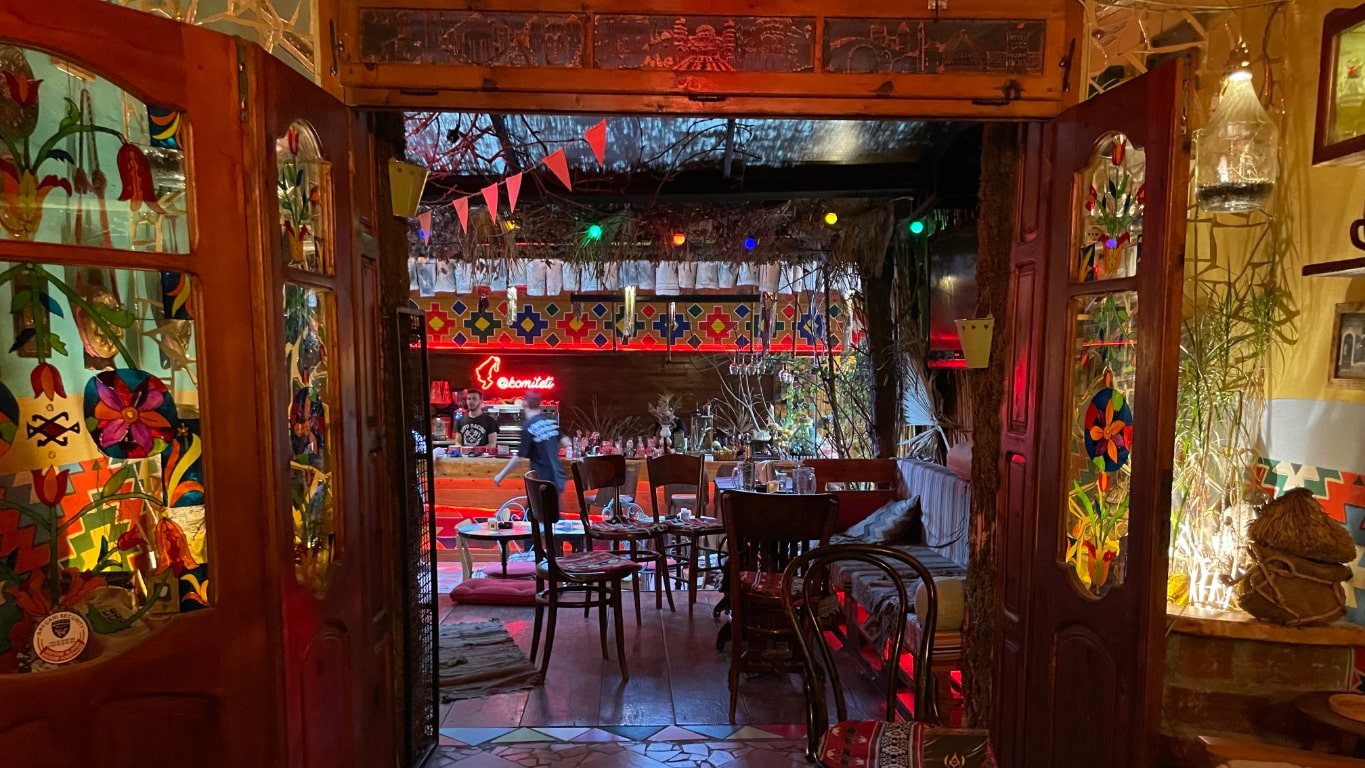
Visit the Bunk Art Museum
This is one of the most unique museums I’ve ever been to. There are two: BunkArt 1 (a huge bunker just outside the city) and BunkArt 2 (more central). I personally loved BunkArt 1. It’s in this enormous underground complex built during the Communist era in case of nuclear war, and now it’s filled with art and historical exhibits. It’s eerie and fascinating and gives you a proper insight into Albania’s very recent, very intense history.
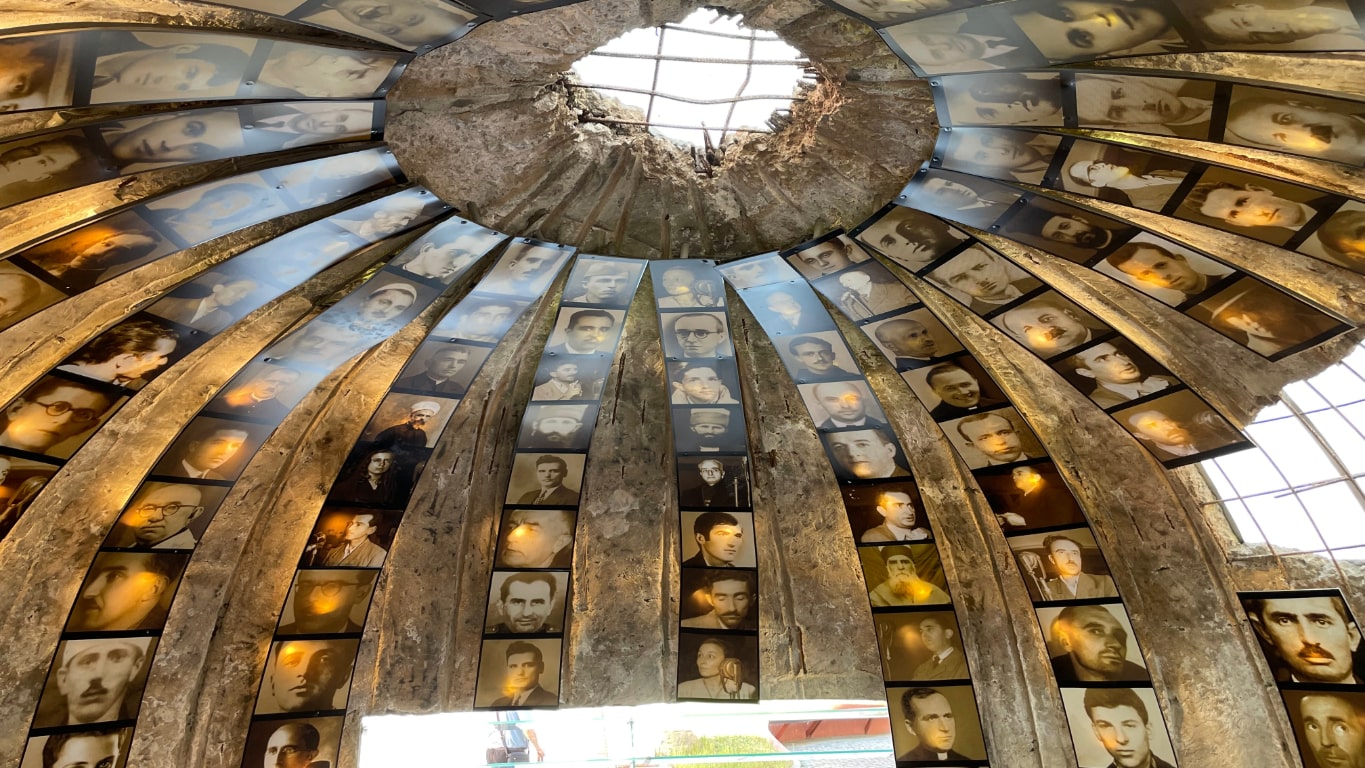
Take the Cable Car up to Mount Dajti National Park
Mount Dajti is basically Tirana’s outdoor playground, and it’s only a short drive out of the city. The Dajti Ekspres cable car takes you up the mountain with incredible views over Tirana, and at the top, you’ll find cafes, a restaurant, a mini adventure park, and loads of forest walks and picnic spots. It’s an easy half-day or full-day trip if you want fresh air and green space.

Ease of Living
I found Tirana very easy to settle into, which surprised me, because I didn’t know what to expect at all.
- Language: A lot of younger Albanians speak English and are incredibly welcoming. Even where English wasn’t spoken, people were helpful and patient.
- Transport: Tirana doesn’t have a metro or train system, but the city is compact and easy to walk around. Buses are cheap and reliable, though the routes can be a bit confusing at first. Taxis are very affordable – just make sure to agree on a price before you hop in.
- Visas: Here’s the gold nugget: US passport holders can stay in Albania visa-free for up to a year! For most other nationalities, it’s 90 days in 180, like the majority of Europe.
How to Choose Your Next Nomad Base
When picking your next nomad destination, ask yourself:
- Do you want a big community or somewhere quiet to focus?
- Are you chasing the sun, mountains, or city buzz?
- What’s your budget?
- How long do you want to stay? (Some countries offer a nomad visa now!)
Every country on this list offers a different flavour of the digital nomad lifestyle, and they’re featured on my list of best digital nomad locations for different reasons. You just need to find the one that fits your current season of life.
Final Thoughts
Choosing a new place to live and work remotely is one of the greatest freedoms the digital nomad lifestyle offers.
Whether you’re chasing community vibes in Bansko, city life in Medellín, or an active, outdoor lifestyle in Cape Town, there’s a world full of options waiting for you.
And if you need more inspiration, make sure you check out my full guides on Bansko, Albania, Cyprus, and more. Happy travels, nomads!
Disclaimer: My blog contains affiliate links. If you buy something through these, I get a small commission at no additional cost to you. Thank you x

